Lou’s Views
News & Views / June Edition
Calendar of Events –

N.C. 4th of July Festival
July 4th
Southport
The patriotic spirit of America is alive and well in the City of Southport. For over 200 years this small maritime community has celebrated our nation’s independence in a big way. Incorporated as the N.C. 4th of July Festival in 1972 the festival committee strives to keep the focus of the festival on honoring our nation’s birthday with a little fun thrown in.
For more information » click here

Battleship Blast 4th of July Celebration
July 4th
Wilmington
Annual 4th of July Celebration at Riverfront Park in downtown Wilmington. Featured entertainment will perform from 6:00 PM to 9:00 PM, followed by fireworks at 9:05 PM launched from a barge in the Cape Fear River adjacent to the USS North Carolina Battleship. The only place you need to be this holiday is downtown Wilmington for the best view of fireworks.
For more information » click here
 Discover a wide range of things to do in the Brunswick Islands for an experience that goes beyond the beach.
Discover a wide range of things to do in the Brunswick Islands for an experience that goes beyond the beach.
For more information » click here.
Calendar of Events Island –
 Concerts on the Coast Series
Concerts on the Coast Series
The Town’s summer concert series calendar has been released! Live performances featuring local musical groups are held at the pavilion on Sunday evenings from late May to early September. The concerts are free of charge.
For more information » click here
July 14th Sand Castle Competition
Sign up for our Sand Castle Competition at the Pier. The competition starts at 9:00 a.m. with judging at 11:00 a.m. Teams of two must provide their own supplies. Call (910) 842-6488 to register by Wednesday, July 12th.
July 24th Summer Picnic and Ice Cream Social
Join us at noon on July 24th for a Summer Picnic and Ice Cream Social. If weather permits, the event will be held at the Bridgeview Park Picnic Shelter. In the event of bad weather, it will be held in the Town Hall Public Assembly. Call (910) 842-6488 to register by Monday, July 17th.
July 25th Paws in the Park at Bridgeview
Bring your dog out for a couple of friendly competitions including best owner/pet recreation related outfit and best trick. The party will run from 5:00 – 6:00 p.m. Leashes are required.

Tide Dyed Program
This event is located at the Holden Beach Pavilion. Tie dye your own shirts; the cost is just $7 per shirt. It takes place between 1:00 to 2:30 p.m. every Tuesday during the summer.
.
.
Beginning June 13th and continuing through August 8th
with no program the week of July 4th

Summer Day Camp Program
Day Camp is on Thursday during the summer beginning June 22nd and is open to children ages 6 – 12. Kids can join us this summer for a variety of fun activities. Click here to view our Camp Schedule with each week’s activity and cost. For any questions, please call please call the Town at 910.842.6488 and ask for Mikayla.
June 22nd “Putterin’ Around” – a trip to Fantasy Isle complete with Putt-Putt and ice cream. Cost: $12 for residents, $17 for non-residents; Time: 11am-1pm
June 29th “Ahoy, Mateys!” – a pirate theme including drawing pirate flags and ships, learning about local pirates, and searching for treasure! Cost: $10 for residents, $15 for non-residents. Time: 9am-12pm
July 6th “Explore the Outdoors” – Learn about Holden Beach from a nature perspective while going on a nature walk, looking at plants and animals and decorating your own insect! Cost: $10 for residents, $15 for non-residents. Time: 9am-
12pm
July 13th “Head in the Game” – This sports themed day will be a fun day of friendly competition and sportsmanship! Cost: $10 for residents, $15 for non-residents. Time: 9am-12pm
July 27th “Sliding thru Holden” – a trip to Magic Mountain, the waterslide park right off the island! Further details to follow.
August 3rd “Tall Tales and Royalty” – What’s your favorite fairy tale? We will look at what makes a story, how they are passed down and so much more! Cost: $10 resident, $15 for non-residents. Time: 9am-12pm
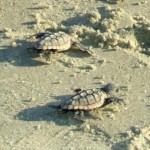 Turtle Talk
Turtle Talk
Two programs both are held every Wednesday during the summer at Town Hall. Children’s Turtle Time is at 4:00 p.m. with crafts, stories and activities for children ages 3 – 6. All children must be accompanied by an adult. Turtle Talk is an educational program at 7:00 p.m. for everyone else. (Beginning June 28th)
Parks & Recreation / Programs & Events
For more information » click here
Reminders –
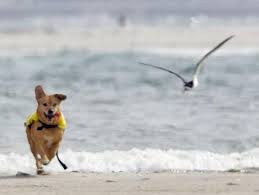
Pets on the Beach Strand
Pets – Chapter 90 / Animals / 90.20
From May 20th through September 10th it is unlawful to have any pet on the beach strand during the hours of 9:00am through 5:00pm.

A Second Helping
.
Program to collect food Saturday mornings (8:00am to 10:30am) during the summer at the Beach Mart on the Causeway.
1) Nineteenth year of the program
2) Food collections have now exceeded 290,000 pounds
3) Collections will begin on Memorial Day weekend
4) Food is distributed to the needy in Brunswick County
For more information » click here
.
Hunger exists everywhere in this country; join them in the fight to help end hunger in Brunswick County. Cash donations are gratefully accepted. One hundred percent (100%) of these cash donations are used to buy more food. You can be assured that the money will be very well spent.
Mail Donations to:
A Second Helping
% Sharon United Methodist Church
2030 Holden Beach Road
Supply, NC 28462
Website:
http://www.secondhelping.us
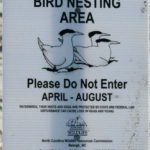
Bird Nesting Area
NC Wildlife Commission has posted signs that say – Bird Nesting Area / Please don’t disturb. The signs are posted on the west end beach strand around 1307 OBW.
People and dogs are supposed to stay out of the area from April through November
. 1) It’s a Plover nesting area
. 2) Allows migrating birds a place to land and rest without being disturbed
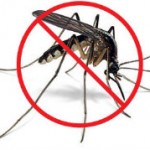
Mosquito Control
Current EPA protocol is that spraying is complaint driven
The Town is unable to just spray as they had in the past
. 1) Complaint based
. 2) Citizen request
. 3) Proactively monitor hot spots
They recommend that you get rid of any standing water on your property that you can
Urged everyone to call Town Hall if they have mosquito issues so that they can spray
Spraying is complaint based, so keep the calls coming!
 Solid Waste Pick-Up Schedule
Solid Waste Pick-Up Schedule
GFL change in service, trash pickup will be twice a week. Starting the Saturday before Memorial Day through the Saturday after Labor Day: Pick-up is every Tuesday and Saturday from May 27th through September 30th
Please note:
. • Trash carts must be at the street by 6:00 a.m. on the pickup day
. • BAG the trash before putting it in the cart
. • Carts will be rolled back to the front of the house
Solid Waste Pick-up Schedule –
starting the Saturday before Memorial Day (May 27th) twice a week
Recycling –
starting after Memorial Day (May 23rd) weekly pick-up
Curbside Recycling
GFL Environmental is now offering curbside recycling for Town properties that desire to participate in the service. The service cost is $106.88 annually paid in advance to the Town of Holden Beach and consists of a ninety-six (96) gallon cart that is emptied every other week.
Curbside Recycling Application » click here
Curbside Recycling Calendar » click here.

Trash Can Requirements – Rental Properties
GFL Environmental – trash can requirements
Ordinance 07-13, Section 50.08
Rental properties have specific number of trashcans based on number of bedrooms.
* One extra trash can per every 2 bedrooms
§ 50.08 RENTAL HOMES.
(A) Rental homes, as defined in Chapter 157, that are rented as part of the summer rental season, are subject to high numbers of guests, resulting in abnormally large volumes of trash. This type of occupancy use presents a significantly higher impact than homes not used for summer rentals. In interest of public health and sanitation and environmental concerns, all rental home shall have a minimum of one trash can per two bedrooms. Homes with an odd number of bedrooms shall round up (for examples one to two bedrooms – one trash can; three to four bedrooms – two trash cans; five – six bedrooms – three trash cans, and the like).
Building Numbers
Ocean front homes are required to have house numbers visible from the beach strand.
Please call Planning and Inspections Department at 910.842.6080 with any questions.
§157.087 BUILDING NUMBERS.
(A) The correct street number shall be clearly visible from the street on all buildings. Numbers shall be block letters, not script, and of a color clearly in contrast with that of the building and shall be a minimum of six inches in height.
(B) Beach front buildings will also have clearly visible house numbers from the strand side meeting the above criteria on size, contrast, etc. Placement shall be on vertical column supporting deck(s) or deck roof on the primary structure. For buildingswith a setback of over 300 feet from the first dune line, a vertical post shall be erected aside the walkway with house numbers affixed. In all cases the numbers must be clearly visible from the strand. Other placements may be acceptable with approval of the Building Inspector..
![]()
BOC’s Meeting
The Board of Commissioners’ next Regular Meeting is scheduled on the third Tuesday of the month, July 18th

News from Town of Holden Beach
The town sends out emails of events, news, agendas, notifications and emergency information. If you would like to be added to their mailing list, please go to their web site to complete your subscription to the Holden Beach E-Newsletter.
For more information » click here
Volunteers needed
The Town is always looking for people to volunteer for their various boards and committees. If you are interested in serving, please fill out a resume form and submit it to [email protected].
 Elevators
Elevators
Most states mandate that elevator systems be tested and inspected annually. Currently the state of North Carolina does not require annual inspections to be performed on all elevator systems. The use of unsafe and defective lifting devices imposes a substantial probability of serious and preventable injury to your family and guests. It is in the owner’s best interest to minimize injuries and liability by scheduling an annual safety inspection to ensure the safe operation of their elevator system.

Library
If you need something to keep you busy in this colder weather, make sure to visit the island library. The library is in the upstairs of Holden Beach Town Hall. All the books were donated. Patrons of the library don’t have to check out a book; they are on the honor system to return it.

Neighborhood Watch –
• Need to look out for each other
• Call 911 if you see or hear anything suspicious
• Fill out Keep Check Request Form if you will be out of town
• Pickup copy of Protecting Your Home..
Storm Events –
 Hurricane Vehicle Decals
Hurricane Vehicle Decals
Property owners will be provided with four (4) decals which will be included in their water bills. It is important that you place your decals on your vehicles immediately to avoid misplacing them. Decals will not be issued in the 24-hour period before an anticipated order of evacuation.
The decals are your passes to get back onto the island to check your property in the event an emergency would necessitate restricting access to the island. Decals must be displayed in the lower left-hand corner of the windshield, where they are not obstructed by any other items. Officials must be able to clearly read the decal from outside the vehicle. Please note that re-entry will NOT be allowed if a current, intact decal is not affixed to the windshield as designated.
EVACUATION, CURFEW & DECALS
What is a State of Emergency?
A proclamation by the Town which enacts special ordinances and/or prohibitions during emergency situations to protect the public, public health and property. These prohibitions can include limitations on movement, curfews, directing of evacuations, controlling ingress and egress to the emergency area, alcoholic beverages, and more. State of Emergencies are issued in accordance with N.C.G.S. 166A-19.22.
What is a curfew?
A curfew is an order, typically during a State of Emergency, which requires all persons in the affected areas to remain on their own property. During a curfew, you are not free to move about public domain areas or on others’ property. Violations of a curfew could lead to arrest in certain situations.
What is a voluntary evacuation?
A voluntary evacuation creates a recommendation for all parties in the affected area to get their affairs in order hastily and evacuated.
What is a mandatory evacuation?
A mandatory evacuation means you must leave the area in which an order has been issued. With recent changes to the laws in North Carolina, you no longer have the option of staying in an area under an order of mandatory evacuation.
Why is the sewer system turned off during a storm/event?
Often the sewer system is turned off during storms which have the potential to create significant flooding on the island. The system is turned off to protect its integrity. If it were left on, it could pose a significant threat to the public health. When the system is manually shut down, it also greatly reduces the time needed to bring it back up after an event which equates to getting residents and guests back on the Island much faster.
Why is there a delay for decal holders to get back on the island once a storm ends?
After a storm, many things must occur before even limited access can be allowed. Some of those things include making sure the streets are passable; the sewer system must be restarted to comply with State laws; the utilities (water, sewer, electricity, propane supplies) must be checked to ensure no safety risk are present; and the post-storm damage assessment team needs to perform an initial assessment.
Where can I get up-to-date information during and after a storm or State of Emergency?
You can sign up for the Town email service by clicking here. The newsletter, along with the Town’s website will be the main sources of information during an emergency situation. Links to the Town’s official Facebook and Twitter pages can be found on the website. You can also download our app for Apple and Android phones by accessing the app store on your smart phone and searching Holden Beach.
Please refrain from calling Town Hall and Police Department phone lines with general information questions. These lines need to remain open for emergencies, storm management and post-storm mitigation. All updates concerning re-entry, general access, etc. may be found on the Town’s website and other media outlets.
Why do I see others moving about the island during a curfew?
If a curfew order is in place, you must stay on your own property. You may see many other vehicles moving about the Island. We often receive assistance from other local, state, federal and contract personnel during events. It is likely these are the personnel you are seeing, and they are involved in the mitigation process for the event. Please do not assume that a curfew order has been lifted and/or you are free to move about the island.
Can I check my friends’ property for them?
If a curfew order is in place, you may ONLY travel to your personally owned property. Traveling about the Island to check on others’ property is not allowed. is in place, you may ONLY travel to your personally owned property. Traveling about
Who can obtain decals?
Only property owners and businesses who service the island can obtain a decal.
How do I get decals for my vehicle…?
If I am an owner?
Decals will be mailed out in water bills to property owners before the season starts. Those owners who need additional decals can contact Town Hall. A fee may apply, please check the current fee schedule.
If I am a renter?
You must contact the owner of the property to obtain a decal.
If I am a business owner on the Island?
You must contact Town Hall to obtain a decal.
If I am a business owner off the Island that provides services on the Island?
You must contact Town Hall for eligibility and to obtain a decal.
When does my decal expire?
All decals expire on the last day of the calendar year as indicated on the decal.
Where do I put my decal on my car?
Decals must be displayed in the lower left-hand corner of the windshield, where they are not obstructed by any other items to include window tinting, other decals, etc. Officials must be able to clearly read the decal from outside the vehicle. Please note that re-entry will not be allowed if a current, intact decal is not affixed to the windshield as designated.
How do I replace a decal if I get a new vehicle?
If you trade a vehicle or otherwise need a replacement decal, you may obtain them from Town Hall during normal business hours. A fee may apply, check the current fee schedule.
Can I obtain a decal right before an emergency occurs?
While most of the storms we deal with are tropical in nature with some type of advanced warning, we do experience many other types of events that could create a State of Emergency without warning. All eligible parties should obtain decals as early as possible each year to avoid being denied access to the Island. Decals shall not be issued during the 24-hour period prior to an anticipated order of evacuation so staff can concentrate on properly preparing the Town for the storm/event.
Can I use a tax bill or another document for re-entry?
No. You MUST have a decal to re-enter the Island until it is open to the general public.
How does re-entry after a storm during a State of Emergency work?
The bridge is closed to all vehicle access, except for official vehicles. Once those with proper decals are allowed access, they must conform with the current rules in place by the specific State of Emergency Order. After all hazards have been rendered safe, the bridge will be opened to the general public. A curfew could remain in effect however, to ensure the safety and security of the Island and its residents and guests. Please understand this process typically takes days to evolve and could be significantly longer, depending on the amount of damage sustained. Please refrain from calling for times for re-entry, as those are often not set on schedule. Instead, stay tunes to local media outlets and official social media accounts for accurate updates.
How can I check on my property if access is limited to the Island?
Once it is safe, property owners with valid decals will be allowed back on the Island after a storm/event. At this point, you can travel to your property, in accordance with the rules of the specific State of Emergency Order currently in place.
If you live out of the area, please do not travel to the Island until you are certain you will be allowed access. Stay tuned to those media outlets and email services that are of official nature for this information. Also, be certain you have your current, valid decal properly affixed to your vehicle.
It is a good idea to be sure your contact information is current with the Town tax office as this is the location Town officials will use in the event you need to be contacted.
For more information » click here
NC General Statute 166A-19.22
Power of municipalities and counties to enact ordinances to deal with states of emergency.
Synopsis – The governing body may impose by declaration or enacted ordinance, prohibitions, and restrictions during a state of emergency. This includes the prohibition and restriction of movements of people in public places, including imposing a curfew; directing or compelling the voluntary or mandatory evacuation of all or part of the population, controlling ingress and egress of an emergency area, and providing for the closure of streets, roads, highways, bridges, public vehicular areas. All prohibitions and restrictions imposed by declaration or ordinance shall take effect immediately upon publication of the declaration unless the declaration sets a later time. The prohibitions and restrictions shall expire when they are terminated by the official or entity that imposed them, or when the state of emergency terminates.
Violation – Any person who violates any provisions of an ordinance or a declaration enacted or declared pursuant to this section shall be guilty of a Class 2 misdemeanor.
Turtle Watch Program –
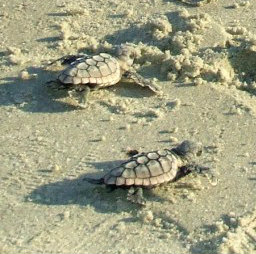
Turtle Watch Program – 2023
• The first nest of the 2023season was on 05/12/23 • Average annual number of nests is 57
• Current nest count – (28) as of 06/23/23
Members of the patrol started riding the beach every morning on May 1 and will do so through October looking for signs of turtle nests.
For more information » click here.
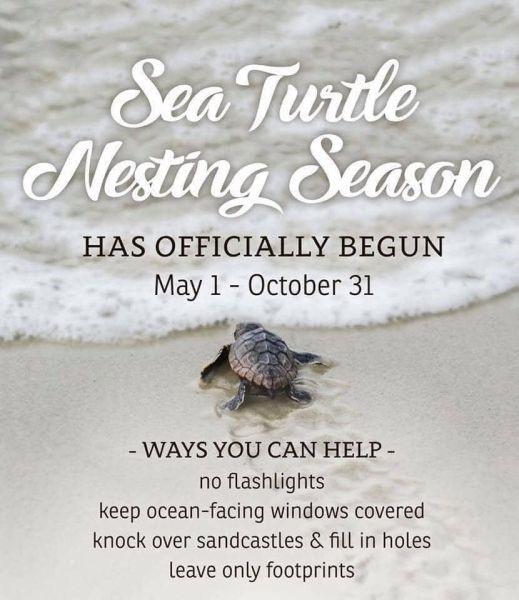
First sea turtle nests of season located on beaches
Sea turtles are nesting on Brunswick County beaches, heralding the seasonal arrival of one of the region’s most-loved creatures. Caswell Beach volunteers noted their first nest May 21, followed by another May 22 and a third on May 23. Oak Island turtle protectors have documented three nests, including one that was so close to the swash line that it had to be relocated farther toward the dune. Bald Head Island has counted five nests, while Holden Beach has four nests so far. “They were perfectly placed,” said Caswell Beach Sea Turtle Watch Coordinator Jamie Lloyd of the nests laid this week. While the beach is showing some erosion, nests to date are close enough to the primary dunes to thrive. The group has more than 30 volunteers this season and will hold a training and update session with the state Wildlife Resources Commission on June 11. Suzan Bell of Oak Island Sea Turtle Protection Program said volunteers have received training and will also attend a Zoom meeting with biologists later this season. Instead of weekly talks at the recreation center, the turtle group is working on a series of short videos for people interested in sea turtles. The videos aren’t posted yet but there is a lot of information, including activities for children, online at https://okiseaturtle.org/. All 40 of the documented nests in North Carolina so far are loggerhead turtles. The state also occasionally sees leatherback, green and Kemp’s Ridley turtles. Females come ashore to dig a nest hole and deposit typically 100-120 eggs about the size of ping-pong balls. It takes 50-85 days for the hatch, depending mainly on the temperature, which also affects the ratio of male to female hatchlings.
Help the turtles
Visitors can help protect sea turtles in several simple ways including not leaving trash, tents, chairs or other gear on the beach; filling in holes and leveling sandcastles at the end of the day; keeping dogs on their leashes; and maintaining a respectful distance from nesting turtles. In the evenings, beach front homes should have their shades drawn and/or turn off beach-facing lights and the use of flashlights should be minimized on the beach. Anyone who notices issues with sea turtle nests or other wildlife may call the state hotline at 252-241-7367 which is monitored 24 hours a day.
Read more » click here
From boats to beaches,
challenges facing sea turtles as nesting season starts in NC
As temperatures rise as summer approaches so do the number of sea turtles in North Carolina’s coastal waters. But also increasing is the number of boats in those very same waters, and for the sea turtles that often can be a dangerous proposition. For staff at the Karen Beasley Sea Turtle Rescue and Rehabilitation Center in Surf City, the warming weather means they’ll be seeing more patients with damaged shells and flippers as concerns over rehabilitating cold-stunned turtles during the winter pivots to trying to save those struck by boat propellers. Sometimes it can be a sobering experience. The Brunswick County Sheriff Office’s Marine Patrol in mid-April rescued a Kemp’s Ridley sea turtle in the Intracoastal Waterway near Sunset Beach that appeared to have been struck by a boat propeller. The turtle eventually made its way to the sea turtle hospital for treatment. But staff found the turtle, dubbed “Hope Sapphire,” to be suffering from too many injuries to be rehabilitated. Terry Meyer, the hospital’s deputy director and conservation director, said not being able to save every turtle that comes through the hospital’s doors can be tough. But, pointing to a pair of small tubs containing two of the hospital’s newest residents, juvenile green sea turtles that had sustained damage from boat propellers, she said it’s satisfying knowing that many more turtles have a fighting chance because of the work done at the Pender County facility. That’s not just through treating injured animals or giving curious visitors a tour of the facility. Hospital staff and volunteers work with local turtle protection groups, which walk area beaches to look for nests, and hold releases up and down the coast to raise awareness and interest in the sea turtles. “It’s helping get that awareness out there,” said Meyer, who has been with the hospital for 27 years, last week. “They are such a charismatic animal, so people like to see them, experience them. But we need to have limits.”
Nesting challenges
That’s especially true when it comes to beach nesting season, which started in North Carolina May 1. “Our No. 1 greatest threat is artificial lighting,” Meyer said. “It’s our biggest concern because the lights can not only disorientate the nesting female as she comes ashore, but also the hatchlings because they’re going to move toward the brightest light they see when they come out of their nest, and we want that to be the moon or the stars as they make their way toward the ocean.” Predators like foxes and raccoons along with overanxious tourists eager to see and get selfies with a giant marine reptile that predates the dinosaurs are other challenges nesting sea turtles and their hatchlings can face. With the nearly weekly turnover in beach visitors during the summer, Meyer said it’s a constant challenge to educate people on proper sea turtle etiquette. “It takes a long time to get a 2-ounce hatchling big enough to come back and nest,” she said, noting that around 30 years is the average time a female loggerhead − North Carolina’s most common sea turtle − has to mature before she’ll return to the area of her birth beach to lay her own eggs. “And that adult might be the only one who survives from 10 or 20 nests that were laid that season.”
Climate change impacts?
While boats and beachgoers might be some of the most obvious challenges sea turtles face, they are by no means the only ones. Climate change is one scientists worry that could impact the marine reptiles in several ways. On the beach, the warming weather is increasing sand temperatures, which helps determine the sex of hatchlings as the buried eggs incubate. If the beach is warmer than 89 degrees, most of the hatchlings will be female; if it’s cooler more will be male. For a long time, researchers have believed that the cooler beaches in the Carolinas produced males to mate with the female-heavy hatchlings produced by the warmer beaches in Florida and along the Gulf Coast. But what will happen if all the country’s beaches get so warm that the vast majority of hatchlings are female? A warming climate, which scientists are predicting for North Carolina in the coming years, also could impact when sea turtles nest. Sea turtle nesting season in the Tar Heel State generally runs from May through August. Dr. Matthew Godfrey, a sea turtle biologist with the N.C. Wildlife Resources Commission, said data so far hasn’t shown turtles nesting earlier in North Carolina. “But anecdotally we have observed a few turtles nesting in September and even October,” he said via email. Ocean Isle Beach saw its first nest on Monday. It is the second earliest verified nest in the Brunswick County town’s history, according to the Ocean Isle Beach Sea Turtle Protection Organization. The only one to beat it was a nest laid May 6, 1995. Forty-five miles up the coast, the Masonboro Island Reserve between Wrightsville Beach and Carolina Beach also was celebrating a nest laid Friday, laying claim to the first North Carolina nest of the 2023 season. Climate change is also forecast to mean more powerful and bigger tropical weather systems, like hurricanes, that can impact coastal areas and beaches where sea turtles nest and forage.
Long-term conservation effort
Even with the growing list of challenges facing sea turtles, including intense development along some of their nesting beaches, it’s not all murky waters for the animals that can live to be 100. Godfrey said that while nest numbers vary by years, there generally has been an upward trend in nesting numbers in the Southeast. “We hope increases in the number of loggerhead nests laid in N.C. (and S.C. and Georgia) are the result of conservation measures put into place in the 1980s and 1990s,” he said, noting that more than 95% of nests in North Carolina are loggerheads. “We hope the trend continues.” Last year the wildlife commission recorded 1,958 sea turtle nests in North Carolina, producing an estimated 209,405 eggs. That’s up from 1,296 nests in 2015 and 881 in 2010. Back at the hospital in Surf City, Meyer echoed Godfrey’s message. “This is a long-term conservation effort, but that’s OK,” she said. “We’ll learn in 50 years how successful we’ve been.”
Read more » click here
Upon Further Review –

THEY’RE BACK!
Rats at the Beach
The Hispid cotton rat is common and widespread across southern, central, and eastern parts of the United States. Currently, the population and range of this species continuously enlarge. This rodent has a sturdy built and extremely small cheek pouches. The grizzled coat of the animal is blackish or grayish in color, covered in stiff black guard hairs. The Hispid cotton rat is identified by its high “Roman” nose and a javelina-like color pattern, due to which the rodent is occasionally called the “javelina rat”.
The cotton rat is a hantavirus carrier, specifically the Black Creek Canal strain, that becomes a threat when it enters human habitation in rural and suburban areas. Hantavirus pulmonary syndrome (HPS) is a deadly disease transmitted by infected rodents through urine, droppings, or saliva. Hantavirus pulmonary syndrome is rare — the chance of getting the disease is 1 in 13,000,000, which is less likely than being struck by lightning.
Previously reported – 2011
Pest Control / Management
David Hewett, Town Manager did presentation
Jim Ericson, an environmental specialist from Mecklenburg County fielded questions
Town Manager prepared report about “perceived” rat problem.
Research revealed the following –
- Rodent called Cotton Rat native to North Carolina
- New World rats, very different from Old World (European) Norway rats
- Herbivores
- Not nocturnal like other rodents
- No threat to public health or safety
- Only viable solution is to reduce their habitat
- Primarily grassy areas, they move from fields to lawns and gardens
Determined that it was really just a Public Relations problem
Staff recommendation – was to undertake program to educate the public
The Town’s statement regarding Cotton Rats included the following comments: During the course of our research, we inquired as to whether we needed to take steps to remove cotton rats from our Island. We were told that, because Sigmodon Hibidus does not generally pose a threat to public health, we would be unable to obtain the depredation permit required to implement a mass extermination.
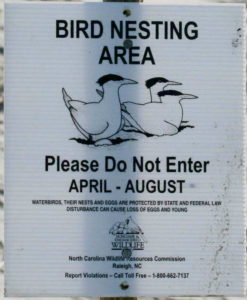 Wildlife Commission asks beachgoers to be mindful of nesting birds
Wildlife Commission asks beachgoers to be mindful of nesting birds
Waterbirds are nesting and brood-rearing now through Aug. 31
Before hitting the beach this summer, visitors should remember to “share the shore” with beach-nesting birds, giving them, their eggs and chicks a wide berth. Waterbird nesting is now under way along the coast, and biologists with the N.C. Wildlife Resources Commission urge people to watch where they step on the beach because these birds are very sensitive to human disturbance. Eggs and chicks are well camouflaged and can be unintentionally stepped on and crushed by humans and pets. Getting too close to a nesting bird can cause it to fly off, leaving the eggs or chicks vulnerable to the elements or to predators. “Birds have their ways of letting you know when you’re too close,” said Carmen Johnson, the Wildlife Commission’s waterbird biologist. “They’ll call loudly and dive at you. Some species will pretend to have a broken wing to lure you or other perceived predators away from the nest and chicks.” Because beachgoers may not recognize bird-nesting habitats, the Wildlife Commission asks the public to observe the black-and-white signs posted by the agency and signs posted by agency partners around important beach-nesting areas and islands. The signs help people avoid nesting grounds from April 1 through Aug. 31, the sensitive nesting and brood-rearing season, and advise that entering an area can result in the loss of eggs or chicks. Wildlife Commission staff also remind boaters to be mindful of nesting birds on islands, particularly if they approach an island posted with the black-and-white signs. “You can help North Carolina’s waterbirds have a successful nesting season by observing them from outside the posted areas, and avoiding islands marked as bird-nesting areas, or unmarked islands where you see nesting birds,” Johnson said. “Some birds nest near the high tide line, and the likelihood of disturbing nests and stepping on flightless chicks is high.” Johnson added that it is especially important to adhere to the “no dogs” rule on the signs. Not only is it the law, but one dog can destroy an entire bird nesting colony in minutes. Some islands that serve as beach-nesting habitat are not marked with black-and-white signs, such as many of the state’s marsh islands in the sounds. Johnson recommends that people give these islands a buffer between their activities and any nesting birds. Likewise, not all nesting areas on the beach are posted, so coastal visitors and residents should always be aware of their surroundings. Beachgoers can help protect nesting shorebirds by: Keeping dogs on a leash at all times. Dogs may chase and harass birds, as well as trample nests, killing chicks or crushing eggs. Following the beach driving regulations. If driving is permitted, only drive on the lower part of the beach and drive slowly enough to avoid running over chicks. Disposing of trash properly when leaving the beach, including bait and scraps from cleaned fish, which can attract predators such as gulls, raccoons, feral cats and foxes. Discarding fishing line and kite string in an appropriate receptacle. These materials can entangle and kill birds and other wildlife if left on the beach. Abstaining from feeding gulls. Gulls are a major predator of young chicks and eggs. Avoiding flying drones and kites near nesting colonies. They may be mistaken for a predator. Cooperating with these simple steps and observing the posted signs will protect valuable bird resources and preserve our amazing beaches and wild waterfronts. For more information about beach-nesting waterbirds and how to protect them, down-load the “North Carolina’s Beach-Nesting Birds” document or visit the Wildlife Commission’s conserving webpage https://www.ncwildlife.org/Conserving/Conserving-North-Carolinas-Wildlife-Resources
Beacon
Corrections & Amplifications –
Paid Parking on Holden Beach
Paid parking will be enforced April 1st – October 31st in all Holden Beach designated parking areas. It will be enforced from 9:00 a.m. – 5:00 p.m. daily, with free parking before and after that time. All parking will use license plates for verification.
As a reminder, Holden Beach uses the “SurfCAST by Otto” parking solution. Annual passes are now available for purchase on the mobile app. You will also be able to purchase passes by scanning the QR-codes located on the parking signs for access to https://surfcast.ottoconnect.us/pay.
Rates for the 2023 season are as follows:
$4 per hour for up to four hours
$20 per day and for any duration greater than four hours
$80 per week (seven consecutive days)
Annual Passes:
$150 per calendar year for a single vehicle
$300 per calendar year for two vehicles
Handicap parking is free in designated handicap spaces and only with a valid license plate or hangtag.
Parking rates can be paid via credit card, debit card or PayPal.
Visit https://hbtownhall.com/paid-parking for more information and to view a table with authorized parking areas.

Odds & Ends –

North Carolina records highest-ever tourism spending year
Governor Roy Cooper announced Tuesday the North Carolina tourism economy reached its highest level ever in 2022, with travelers spending more than $33.3 billion on trips to and within the state. The previous record of $29.22 billion was set in pre-pandemic 2019. “Tourism is a vital economic force in our state supporting thousands of small businesses and hundreds of thousands of jobs,” Governor Cooper said. “We can take pride that visitors see North Carolina as a diverse, inclusive and welcoming place and we all need to work to keep it that way.” Governor Cooper’s announcement coincides with National Travel and Tourism Week, when travel and tourism professionals across the country unite to underscore the value of travel to the economy, businesses, communities and personal well-being. The state’s tourism-supported workforce increased 9.8 percent to 216,900 jobs in 2022, according to a press release. That figure reverses the more than 26 percent loss in employment suffered in 2020. Tourism payroll increased 13.5 percent to $8.7 billion.
Read more » click here
North Carolina tourism spending hits new record of $33.3 billion
North Carolina has set a new record for the amount of money brought into the state from tourism. Tourism officials said last year $33.3 billion was spent by people visiting the state. The announcement coincides with this week, May 7-13, being National Travel and Tourism Week. This figure includes money spent by locals and visitors. The highest before had been $29.22 billion in 2019. Tourism suffered a 26% employment and travel loss in 2020, but this has been reversed with a boom in travel across the state, according to tourism leaders. “Tourism is a vital economic force in our state supporting thousands of small businesses and hundreds of thousands of jobs,” Governor Roy Cooper said. “We can take pride that visitors see North Carolina as a diverse, inclusive and welcoming place and we all need to work to keep it that way.”
The Department of Commerce provided the following tourism facts:
- Total spending by domestic and international visitors in North Carolina reached $33.3 billion in 2022. That sum represents a 15.2 percent increase over 2021 expenditures. The figure falls 14 percent above the record $29.22 billion spent in 2019.
- Domestic travelers spent a record $32.4 billion in 2022. Spending was up 13.4 percent from $28.6 billion in 2021.
- International travelers spent $910 million in 2022, up 170 percent from the previous year.
- Visitors to North Carolina generated $4.2 billion in federal, state and local taxes in 2022. The total represents a 7.9 percent increase from 2020.
- State tax receipts from visitor spending rose 6.5 percent to nearly $1.3 billion in 2022.
- Local tax receipts grew 3.5 percent to nearly $1.2 billion.
- Direct tourism employment in North Carolina increased by 9.8 percent to 216,900.
- Direct tourism payroll increased 13.5 percent to $8.7 billion.
- Visitors spend more than $91 million per day in North Carolina. That spending adds $6.7 million per day to state and local tax revenues (about $3.5 million in state taxes and $3.2 million in local taxes).
- Each North Carolina household saved $512 on average in state and local taxes as a direct result of visitor spending in the state. Savings per capita averaged $230.
- North Carolina hosted approximately 43 million visitors in 2022.
Read more » click here
This and That –
What rising sea levels mean for where and how we live along the NC coast
With several recent academic studies warning of increased sea-level rise along the North Carolina coast and the June 1 start of hurricane season just around the corner, the old question of whether we can continue with development along the oceanfront as normal − or at least as we have been building − is garnering new attention. For decades, state regulators have used historical erosion rates to determine how far back from the first stable line of natural vegetation, often referred to as the dune line, a structure can be built. These setbacks are based on average long-term erosion rates that reflect changes in North Carolina’s shoreline over nearly half a century. The rules are more stringent in areas near inlets that are notoriously unstable and can quickly erode as inlet channels move. While some areas of the state’s 300-mile shoreline are quite stable, especially those that receive regular beach nourishment projects, others are rapidly dwindling. Officials with the Cape Hatteras National Seashore have recorded erosion rates around Rodanthe, a small village near the northern tip of Hatteras Island, of more than 13 feet annually in recent years. Pictures of oceanfront homes in Rodanthe, four in the past 15 months, washing away into the encroaching Atlantic have made national and international news and refocused attention on the dire erosion situation along some parts of the Outer Banks.
What did the new studies say?
The studies found sea-level rise along the North Carolina coast is occurring faster than expected, and at a higher pace than most other areas of the United States. Researchers from Tulane University, in a study published in late March, found sea-level rise of about 0.5 inches a year since 2010 off the Southeast and Gulf coasts, which is three times the global average. While that might not sound like a lot, the U.S. Environmental Protection Agency says average sea level has risen by 0.14 inches since the early 1990s. An annual look by the Virginia Institute of Marine Science at William & Mary at 32 tide gauges along the U.S. coast, also released in March, showed seas continuing to rise, with areas of the Mid-Atlantic coast showing the highest increases. The study projected that by 2050 Wilmington could see an increase of up to 2.26 feet in its high tides compared to 1992 levels.
So, can we ‘retreat’ from the coast?
Yes. But there are plenty of reasons why that’s not the favored option, or even practical, in many cases. In many beach towns moving a threatened oceanfront home to another lot isn’t feasible because everything has already been developed. Many oceanfront homes, especially those built with renting out as their primary purpose, also are too big to be moved. Then there’s the financial considerations. Prices generally increase the closer you are to the ocean, meaning removing or demolishing a beachfront property can cost the homeowner and coastal towns and counties a lot of lost rental and tax revenue, not to mention the potential public relations hit. That’s led to increased interest in taking steps to stabilize beach areas seeing increased erosion, whether through hardened structures like sandbags and terminal groins to beach nourishment projects. New homes also are being built to higher standards, and simply higher on stilts, to better weather the rising seas and expected increase in strength of future tropical weather systems due to climate change. But Dr. Robert Young, director of the Program for the Study of Developed Shorelines at Western Carolina University, said rebuilding back the same way after a storm strike or just severe erosion doesn’t make economic or practical sense knowing what we know about likely future impacts along the oceanfront. “The root of the problem is we still spend tens of millions of dollars-plus on storm rebuilding and resilience, but we don’t ask those communities to do anything differently,” he said, referring to post-storm rebuilding efforts in many coastal areas. “We have those opportunities, but we just don’t take them.”
Towns that get beach nourishments are stable, right?
Like many things, a hurricane strike can change things quickly. But yes, towns that see periodic injections of fresh sand historically have more stable oceanfront areas than those that don’t. Beach nourishment, though, is expensive. And it has to be done every few years to really work. While many beach towns, notably on the Outer Banks, have recently seen new sand, it isn’t known when the next one might come since local communities generally have to foot the bill − sometimes with the state’s help − if it’s not a federal project. And beach nourishment projects aren’t cheap. Dare County officials told Rodanthe residents in January that the county couldn’t afford a nourishment project in the unincorporated village, especially after helping fund projects in several other Outer Banks communities. North Topsail Beach also has abandoned plans to participate in a beach nourishment project with Surf City due to cost concerns. Even if a town is part of a federal beach nourishment project, things don’t always go according to plan. Wrightsville Beach, which has had an Army Corps of Engineers’ beach project since the 1960s, has been waiting more than two years for fresh sand over disputes about where the new beach material should be dredged.
Are people paying a premium to live at the coast?
In short, yes. The consensus, however, is it’s not because of the risk of sea-level rise and other factors tied to climate change, like higher insurance rates, but because there simply isn’t enough oceanfront property for everyone who wants to live there. Using data from the real estate website Zillow, the online data website Stacker determined that Wrightsville Beach was the North Carolina community with the fastest growing home prices. The site said home values in the popular New Hanover County beach town averaged nearly $1.35 million in March 2023, with prices up 8.6% over one year and 82% over five years. Within the list’s Top Ten, Topsail Beach came in at No. 3, Bald Head Island No. 4, Holden Beach seventh, St, James eighth, and North Topsail Beach ninth.
Read more » click here
Factoid That May Interest Only Me –
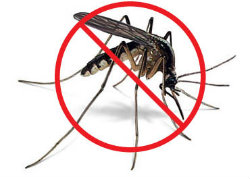 TruGreen’s Top 8 Things Mosquitoes Do Not Want You to Know
TruGreen’s Top 8 Things Mosquitoes Do Not Want You to Know
As we dive into the summer months filled with backyard BBQs and pool parties, we welcome back summer’s ultimate pest: the mosquito. Throughout the warm months, mosquitoes have their choice of hospitable places to relax and to enjoy a bite to eat. Unfortunately, getting mosquito populations under control is a laborious and tricky skill to master. To help you out, our TruGreen mosquito experts went right to the source to learn about the things that mosquitoes find attractive as well as their biggest pet peeves! To get the full scoop on the top things mosquitoes hope you never learn, read our recent Q&A with a mosquito! The answers may surprise you…
1. “We Love Your Floral Scented Soaps”
TruGreen Expert: What are some of the things that you find attractive when choosing a place to set up camp?
Mosquito: Well, for starters, we are big fans of those sweet, gorgeous flowers people sometimes plant in their yards. Since the males of our species only feed on flower nectar, plant sap, honeydew and anything else containing sugars they need to survive, we naturally gravitate towards anything that smells sugary and floral. Because of this, we love your floral scented soaps! It makes us think there are dew-filled flowers nearby that we can feed on.
2. “We Don’t Love the Smell of Lavender”
TruGreen Expert: Is this true for ALL floral scents?
Mosquito: Definitely not. While we love most floral scents, we can’t stand the smell of lavender. In fact, there are quite a few smells that we find relatively unflattering, including citronella, clove, cedarwood, eucalyptus, peppermint, rosemary, lemongrass, geraniol, garlic and basil. However, while these smells are highly unpleasant for us mosquitoes, your entire yard would need to be filled with lavender to really make us want to stay away.
3. “Citronella Candles Probably Won’t Work”
TruGreen Expert: Speaking of citronella, how effective are citronella candles?
Mosquito: Truth be told, citronella candles probably won’t work in your efforts to keep us away. While citronella oil does repel mosquitoes to some extent, the amount produced by a single candle is simply not strong enough to repel us. You’ve got a better shot of keeping us away with bug spray than with citronella.
4. “We Love Sugary Foods”
TruGreen Expert: How does diet affect your choice of eatery?
Mosquito: Diet is very important to us. As I mentioned before, sugar is an incredibly important part of our daily diet. While we prefer to obtain natural sugars from plant nectar, we also find the smell of sugary sodas and candy to be irresistible. The moral of the story is that we will come buzzing when we catch wind of your sugary foods!
5. “We Love Beer Drinkers…”
TruGreen Expert: What about alcohol? Is there anything in particular that gets you buzzing?
Mosquito: Yes, we love beer drinkers! We know there’s nothing more relaxing than enjoying an ice cold beer after a long summer day, and we are happy to partake. The reason we like alcohol drinkers in particular is because alcohol causes your capillaries to expand, sending more blood to the surface of your skin, causing your skin to heat up. This process means more sweat, high levels of carbon dioxide and elevated lactic acid, all of which we find delicious. We hate to be a buzzkill, but if you want us to stop biting, you may have to substitute your IPA for a non-alcoholic, sugar free beverage.
6. “A Healthy Workout Routine Will Have Us Swooning”
TruGreen Expert: So, we have talked about diet, but what about exercise?
Mosquito: A healthy workout routine will have us swooning after you! Similar to drinking beer, exercise will cause blood to rise to the surface of your skin and to make you sweat. Overall, working out means you’re probably breathing heavier and creating more carbon dioxide which, as I mentioned before, attracts us like moths to a flame. That said, if you don’t want us bugging you, consider moving your workouts indoors and showering (with non-floral scented soaps of course) before spending time outside.
7. “Covered” Does Not Mean You’re “Protected.”
TruGreen Expert: If we want to help keep you from biting us, what are some things we should avoid?
Mosquito: Considering our eyes are so small and buggy, we don’t have the best vision. However, we can easily see bold, dark colors like navy, black, grey, and red. If you are trying not to catch our eye, you may want to opt for something a bit less identifiable such as white or yellow. Another thing to know is that “covered” does not mean you’re “protected.” Most people don’t know this about us, but we can actually bite THROUGH your clothing if it is fitted to your form. A good rule of thumb to help avoid the side effects of our itch-inducing saliva is to wear looser fitting clothes so that we can’t reach your skin easily.
8. “We Love Standing Water And Will Flock To It”
TruGreen Expert: Is there anything else we should know to avoid massive swarms of mosquitoes?
Mosquito: Yes! We use stagnant pools of water to meet, mate and lay eggs. Because of this, we love standing water and will flock to it when we see it. If you are truly committed to taking care of your mosquito infestation, you’ll need to clear out any small standing bodies of water. In fact, we need so little water to breed that we can even use a single water bottle cap filled with water to lay eggs. This means that we can reproduce anywhere from flower pots and bird baths to ponds and puddles!
Native Plants –

Pretty and sustainable: Why native NC plants can be good for your garden and the coast
One day it’s 72 degrees during the day, and 35 degrees at night. The next day, it’s a high of 40 degrees and lows well below freezing for days on end, before returning to the 70s for good measure. Welcome to winter in coastal North Carolina. Summer can be just as schizophrenic, with a months-long drought headlined by temperatures reaching triple digits ended by a tropical storm that dumps a foot of rain over three days … followed by another long drought. For those coastal residents looking to test their green thumb, the region’s weather can make landscaping a challenge − never mind trying to grow something in our sandy soil. And with so many people moving to North Carolina from other parts of the country, what plants they grew up with in, say, Connecticut, might not be the right ones for success in a backyard along the Intracoastal Waterway. Realizing the challenges facing residents, along with the budding industry of going native, horticulturalists and plant lovers from several organizations came together roughly five years ago and formed the Coastal Landscapes Initiative (CLI). “We really wanted to see if we could help people, educate them on how they can practice sustainable landscaping at the coast, which includes a number of things including how you water, how you fertilize, how you manage your stormwater, and where you plant,” said Gloria Putnam, a coastal resources and communities specialist with N.C. Sea Grant. With runoff among the biggest threats to coastal water quality, managing how properties control how much water they use and where it goes is vital − and a key part of that is what landscaping you choose. Putnam said vegetation is often the things removed from a property before it’s developed, and the last thing that’s put back. “Often we remove the vegetation and then plant back with vegetation that doesn’t provide the benefits that native vegetation did,” she said. “It changes the dynamics of the site, so the idea was can we move the needle a little bit on this to see if we can provide information to people who are ready to do things a little differently.” Climate change is another reason coastal homeowners might want to go native when it comes to their gardens. With natives often more drought- and heat-tolerant than non-native plants, and with longer periods of dry, hot weather forecast for North Carolina in coming decades, they could be a hardier bet than exotics from another part of the country or world. Native coastal plants are also generally better able to withstand salt water, which can make them a better alternative for waterfront homeowners with sea levels projected to keep rising in coming decades and tide surges set to increase. In the latest edition of N.C. Sea Grant’s Coastwatch magazine, the Coastal Landscapes Initiative has recommended a dozen plants and trees that are beautiful, environmentally beneficial, cost-efficient and adapted to thrive in the coast’s harsh conditions. Some of the plants might not be well known to many, and you might have to look beyond your nearby big-box retailer to find them. They also might be a bit more expensive than more common and popular plant species, since demand dictates supply. “In some cases, you might have to look hard, but they’re out there,” Putnam said, adding that local cooperative extension offices and CLI’s website can help folks find nurseries that offer them. The local offices and many public gardens also often have native plant gardens, so homeowners can see what the plants look like in a real-world setting.
Here’s a look at some of the group’s native plant picks:
Little bluestem
A warm-season bunchgrass that gets its name from its bluish-green springtime growth. Putnam said the grass is salt tolerant and, once established, very drought tolerant. “It’s an attractive plant,” she said. Bluestem performs best in well-drained soils in full sun. It also tolerates a wide range of soil conditions, including clay.
Wild indigo
A drought-tolerant plant that thrives in full or partial light, wild indigo is also known as Baptisia. The plant is long-lived, low-maintenance, virtually pest-free and its spring-blooming flower spires are real attention getters − and not just for humans. Bumblebees and other pollinators love wild indigo. “It’s a lovely plant,” Putnam said. “It takes a while to get established, but it adds a lot of color and structure to a garden.”
Goldenrods
Like a bit of color in your garden in the fall that also can help attract a variety of insect pollinators and butterflies, including the monarch butterfly? Then goldenrods are for you. Putnam said goldenrods are shade-tolerant and very easy to maintain, tolerating poor soils. “That’s the great thing about native plants,” she said, adding that the plant is an “insect magnet” and blooms for a very long time.
American beautyberry
An understory shrub. the plants provides a myriad of advantages for homeowners and their gardens’ winged guests. In the spring, American beautyberry’s flowers attract pollinators. The plant follows that up in the fall by producing purple berries that draw songbirds to the garden. And if that wasn’t enough, the shrub’s leaves repel mosquitoes and ticks. The plant is also very resistant to pests and is largely drought tolerant.
Sweet pepperbush
Another shrub that can add something special to summer garden, sweet pepperbush’s leaves turn golden brown in the fall. Once established the plant can withstand short periods of drought and flooding, and it is fire-resistant. The shrub’s flowers produce high quality nectar and pollen that supports hummingbirds, butterflies, bees and other pollinators.
To see more native plants recommended by the Coastal Landscapes Initiative for coastal gardens, go to the winter 2022 edition of N.C. Sea Grant’s Coastwatch magazine.
Read more » click here
NC State Native Plant Resources » click here
NC Sea Grant Coastal Landscapes » click here
New Hanover County Arboretum Native Plant Garden » click here
Audubon Native Plant Database » click here
Fauna & Flora » click here
Holden Beach recommended plant list – deer resistant & salt tolerant.
Beach Strand –
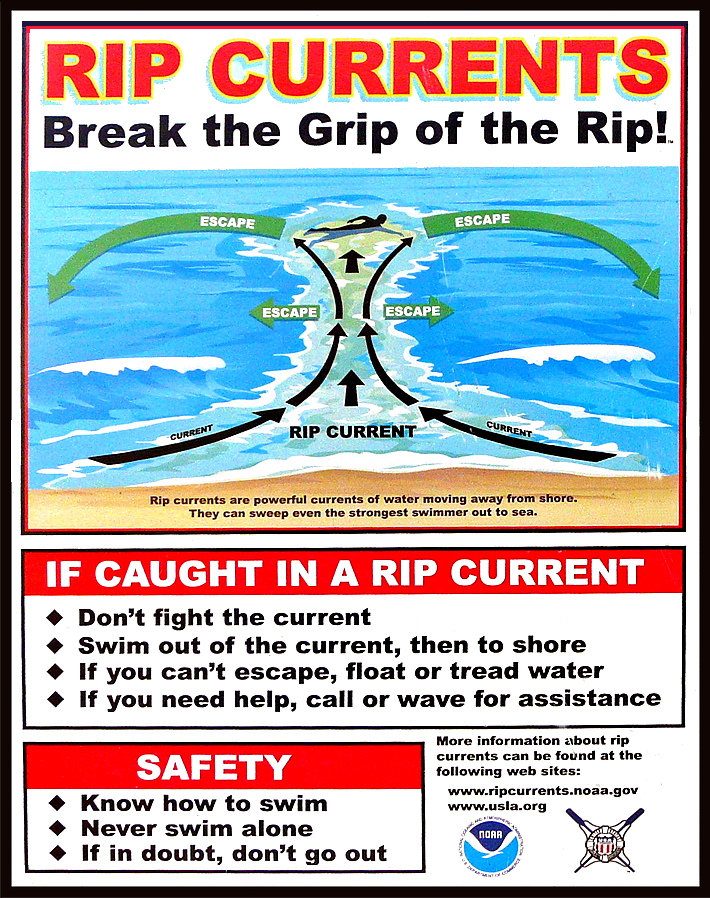
Most rip current deaths are preventable. Yet people keep drowning.
Beach-safety experts are frustrated by the mounting fatalities despite awareness campaigns and improved forecasts
Rip-current deaths in the United States are running ahead of last year’s pace — at least 29 since the beginning of the year — with peak beach season yet to come. Experts are warning the public to be aware of this largely hidden hazard ahead of Memorial Day weekend, traditionally one of the busiest beach weekends of the year. The risk of dangerous rip currents is expected to be particularly high this weekend along portions of the Southeast coast where a storm could produce heavy rain, gusty winds and rough seas. Experts say most rip-current fatalities can be prevented. Still, the number of annual rip-current deaths has steadily climbed since the National Weather Service began tracking them in 2010, reaching a record of 130 in 2021, then dipping to 85 last year. Rip currents were the third-leading cause of weather-related deaths from 2012 to 2021, behind only heat and flooding, according to the Weather Service, and in a typical year they kill more people than lightning, hurricanes or tornadoes. Rip currents are strong, narrow streams of water that flow away from the shoreline and can suddenly sweep swimmers out to sea. They can form on almost any beach with breaking waves, especially near low spots or breaks in sandbars, and near jetties or piers. Predicting where and when a rip current will form is difficult because of the many weather and ocean factors involved. The Weather Service cautions that “rip currents often form on calm, sunny days.” The Weather Service lists 26 rip-current deaths this year through April 27, not including three deaths believed to be caused by rip currents on April 28 in Destin, Fla., May 6 in Ocean City, Md., and May 12 at Cannon Beach, Ore. At this point last year, there were 19 total such deaths. Beach-safety experts are expressing frustration as fatalities trend higher again this year despite annual awareness campaigns, such as the United States Lifesaving Association’s National Beach Safety Week held every year during the week before Memorial Day, and recent improvements to rip current forecasts. “It is frustrating when we produce videos and graphics and educational information and release it at the beginning of each beach season, and it still misses so many people,” Scott Stripling, a senior meteorologist at the National Hurricane Center in Miami, said in an email. “The problem seems to be one of communication and/or lack of attention by the general public.”
Rip-current forecasts and warning signs
The Weather Service issues daily rip-current forecasts for beaches on the Atlantic Ocean, Gulf Coast, Southern California, Great Lakes, Puerto Rico and the U.S. Virgin Islands. The forecasts categorize the rip-current risk as low, moderate or high, and are informed by a rip-current model recently developed by NOAA that has made it possible to differentiate the risk between adjacent beaches. Previously the same forecast could span 100 miles or more. However, the model doesn’t enable reliable forecasts of the exact location and time of rip currents. These are influenced by a number of factors including wave characteristics, water levels, winds and the shape of a beach. Advances in artificial intelligence could help with rip-current detection — NOAA is partnering with the Southeast Coastal Ocean Observing Regional Association on a project using AI to detect rip currents in webcam imagery — but such efforts are still in their infancy. In some cases, there are visible clues to the existence of a rip current, such as a break in the waves, foamy water or objects being carried offshore, or darker water that is due to a break in a sandbar. Often, though, rip currents are difficult to see, or are best seen from a high point such as a dune line or the top of a beach access. Rip currents are particularly hard to spot in South Florida, where, the Weather Service says, they “consistently rank at or near the top of the list of deadliest weather-related hazards,” because there is not much sediment to darken or muddy the current at the shoreline. In Brevard County alone, home to nearly 72 miles of sandy beaches, there have been eight apparent rip-current drownings since November, all at beaches without lifeguards. “We have clear-water rips, so these offshore-flowing currents are very hard to detect,” Stephen Leatherman, a professor in the department of earth and environment at Florida International University, said in an email. “The best thing is to have lifeguards and for people to swim close to lifeguards. But lifeguards are very expensive, and Florida has 825 miles of good quality sandy beaches which are swimmable for most of the year.”
Warnings and tips for surviving a rip current
Rip currents flow at speeds up to 5 miles per hour. That may not sound fast, but it’s faster than many Olympic swimmers. If you are caught in a rip current, experts say not to swim directly back to shore against the current, which can quickly exhaust and drown you. Instead, swim parallel to the shore until you are out of the current, which is typically no wider than about 50 to 100 feet. You might also escape by floating or treading water, allowing the current to take you out just past the breaking waves where many rip currents tend to dissipate, and then circulate you back toward the shore. However, some rip currents can extend hundreds of yards offshore. If you see someone caught in a rip current, experts urge you not to risk your own life to attempt a swimming rescue unless you have been trained to do so and have a flotation device to assist you and the person in distress. Instead, you should get help from a lifeguard or call 911 if no lifeguard is present. You should also throw the victim something that floats, such as a lifejacket, body board, cooler or a ball, and yell instructions on how to escape. Experts agree that the best way to survive a rip current is to avoid it in the first place. That means checking the rip-current forecast before you enter the water, heeding warnings for rip currents or rough surf, and only swimming close to a lifeguard. The United States Lifesaving Association estimates the chance of someone’s drowning at a beach with a lifeguard at 1 in 18 million. “Lifeguards are trained to spot rip currents and other beach hazards and intervene as and when needed,” Chris Houser, a professor at the University of Windsor School of Environment and a longtime beach-safety researcher, said in an email. “While there is some evidence that individual beach users can be trained to spot rips, most beach users are not aware of what to look for.” U.S. lifeguards make an estimated 80,000 or more rip-current rescues each year, which suggests that education and warning messages are not reaching or are not resonating with as many people as experts would like. “If the lifeguards are flying precautionary flags, and there are signs on the lifeguard stand identifying the potential for rips in that area, and the National Weather Service and media have advertised that there is at least a moderate risk for rip currents to be present at your local beach, what else can we do?” the Weather Service’s Stripling said.
Read more » click here

Sharks are gathering off the NC coast. Here’s why and how you can avoid them.
Memorial Day is here, but before you decide to dip your toes in the ocean, you should know that you’re likely not alone (queue the Jaw’s music). A growing body of research indicates North Carolina might be a temporary gathering place for one of the ocean’s great apex predators. Great white sharks like Ormond, a nine foot, 600-plus pound subadult male are swimming off North Carolina and have been for weeks. “They’re there off (Wilmington’s) beaches basically from November until now,” said Chris Fischer, founder of OCEARCH, a global nonprofit organization dedicated to studying great whites and other species. Driven by a variety of factors, the waters off North Carolina are a brief vacation destination for great white sharks in the spring. The abundance of great whites might scare some, but researchers say there’s little to fear, and that this discovery could spur future shark research in North Carolina.
Is North Carolina a hub for great white sharks?
- Tracking data indicates North Carolina, particularly between Wilmington and the Outer Banks, is a large gathering place for great white sharks. Among the great whites OCEARCH tracks, five of the 10 sharks swimming off North Carolina pinged in their locations in the last three weeks.
- During OCEARCH’s most recent expedition to the Carolinas a few weeks ago, the team saw 2-3 great white sharks a day during good weather, which is uncommon. Typically, the organization sees a shark every third day or so during expeditions.
- The amount of great white sharks in the Carolinas, and how easy they are to find, is an exciting discovery for researchers because it could help create future opportunities to study the species.
- “I expect there will be a lot more white shark programs popping up in the Carolinas now that we’ve kind of identified when they’re here and how predictably they’re here,” Fischer said.
SHARK TRACKER: See the OCEARCH tracking map. / https://www.ocearch.org/tracker/
Why are sharks gathering off the Carolinas?
- The reason great white sharks spend so much time off North Carolina has to do ocean temperatures. Most great whites spend their winters between Cape Hatteras and the Gulf of Mexico but begin migrating north to New England and Canada in the spring.
- Great white sharks get “pinched” in the Carolinas for several weeks in the spring because waters north of Cape Hatteras haven’t warmed up enough to accommodate the apex predator. As a result, great white sharks might spend part of April and May in North Carolina, before moving north later in May and into June.
- While great white sharks are waiting to move north, researchers at OCEARCH believe mature adults might be using the opportunity to mate. Based on the white sharks OCEARCH has studied, mature adults appear to be “potentially reproductively ripe,” meaning the waters off North Carolina could be a breeding ground for great white sharks.
What can you do to avoid an encounter with a shark?
- In 2022, there were two unprovoked shark bites in North Carolina, out of 41 cases nationally, according to the International Shark Attack File, which is maintained by the Florida Museum of Natural History. Since 1935, Brunswick County (17) followed by New Hanover County (15) have had the most unprovoked shark attacks of any county in North Carolina.
- Shark encounters and attacks are incredibly rare. More people have been killed by dogs, bears, holes in the sand and lightning than by sharks, according to the International Shark Attack File.
- Fischer recommends beachgoers observe their surroundings before they get in the water. Swimmers should avoid areas where marine species appear to be hunting such as birds diving into the water, bait balls or more, because predators tend to get attracted to those activities.
Read more » click here
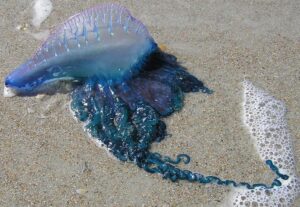 Jellyfish and Portuguese Man of War have been spotted along the surrounding area beaches already this season and the little floating creatures can pack a punch. Often times beachgoers will spot them washed up on shore and other times they can be spotted in the water, but it is best to avoid them when you can. “While all jellyfish sting, not all contain poison that hurts humans. Be careful of jellies that wash up on shore, as some can still sting if tentacles are wet. NOAA recommends that if you are stung by a jellyfish to first seek a lifeguard to give first aid. If no lifeguards are present, wash the wound with vinegar or rubbing alcohol,” NOAA suggests. And what about that … other method of treating stings? Turns out, it’s a myth. In fact, urine can actually aggravate the stinging cells of jellyfish, making things worse. These cells, which detach and stick into the skin of prey, can continue to inject venom. Urine, as well as fresh water, can cause an imbalance to the salt solution surrounding the stinging cells, causing them to continue to fire. According to Scientific American, if you don’t have vinegar or rubbing alcohol, rinsing with saltwater may be your best bet.
Jellyfish and Portuguese Man of War have been spotted along the surrounding area beaches already this season and the little floating creatures can pack a punch. Often times beachgoers will spot them washed up on shore and other times they can be spotted in the water, but it is best to avoid them when you can. “While all jellyfish sting, not all contain poison that hurts humans. Be careful of jellies that wash up on shore, as some can still sting if tentacles are wet. NOAA recommends that if you are stung by a jellyfish to first seek a lifeguard to give first aid. If no lifeguards are present, wash the wound with vinegar or rubbing alcohol,” NOAA suggests. And what about that … other method of treating stings? Turns out, it’s a myth. In fact, urine can actually aggravate the stinging cells of jellyfish, making things worse. These cells, which detach and stick into the skin of prey, can continue to inject venom. Urine, as well as fresh water, can cause an imbalance to the salt solution surrounding the stinging cells, causing them to continue to fire. According to Scientific American, if you don’t have vinegar or rubbing alcohol, rinsing with saltwater may be your best bet.
At the beach? Don’t pop the ‘balloons!’
We’ve definitely had some windy weather in the past few days. And on the coast, those winds bring with it an interesting sighting! The Cape Lookout National Seashore Park posted on Facebook about some very temptingly poppable-looking things that have been washing up on their beaches. These little “balloons” are gas-filled floats that keep the Man-o-War jellyfish afloat as they drift through the ocean. The winds can pick these floats up and they can wind up on the beach, but the folks at the park caution that no matter how tempting it is, you should not pop these things! “Give them a wide berth,” the Facebook post ways. These are carnivorous jellyfish and use their dangling tentacles to kill their prey. Even washed ashore, the tentacles still pack a punch, so don’t mess with the balloons! Stepping on it will hurt!
Read more » click here
Portuguese man o’ war
The man-of-War are not usually in the area unless pushed to the coast by wind and ocean currents. It is a purple-blue color and can be up to 10 inches long. The Portuguese man o’ war (Physalia physalis), is not a jellyfish but related to the species and is highly venomous. It has numerous venomous microscopic nematocysts which deliver a painful sting powerful enough to kill fish. Stings can result in intense joint and muscle pain, headaches, shock, collapse, faintness, hysteria, chills, fever, nausea, and vomiting. Severe stings can occur even when the animal is beached or dead. Although it superficially resembles a jellyfish, the Portuguese man o’ war is in fact a siphonophore. Like all siphonophores, it is a colonial organism, made up of many smaller units called zooids. All zooids in a colony are genetically identical, but fulfill specialized functions such as feeding and reproduction, and together allow the colony to operate as a single individual.

 Staying safe at the beach: Rip currents, jellyfish, sharks, and other hazards
Staying safe at the beach: Rip currents, jellyfish, sharks, and other hazards
A trip to the beach can turn deadly (or painful) due to natural hazards but being aware of risks and mitigating hazards is a good way to prevent problems.
Picture this: warm weather, blue skies, and your toes in the sand — it sounds like a perfect lazy summer day at the beach. Maybe you decide to cool down in the ocean and find yourself bobbing around when suddenly you realize you are a little too far out. As panic sinks in and you start to swim towards dry land you realize your efforts are in vain and your whole body is getting tired, all the while you are drifting further into the Atlantic — you have gotten stuck in a rip current. It’s not the only potential danger in the ocean, though. There are also sharks. And, of course, there are some things on shore that ruin your day at the beach, too, including stepping on jellyfish and, of course, good old-fashioned sunburn.
Rip currents
According to the U.S. Lifesaving Association (USLA), 80 percent of all ocean rescues are related to rip currents and annually more than 100 fatalities across the country are due to rip currents. While it is obvious that swimming at a beach with lifeguards is one of the safer options, there are plenty of area beaches that lack lifeguards or maybe ocean rescue season has not started just yet. So, what is the best course of action for surviving a rip current? According to the National Weather Service, there are several things swimmers should keep in mind when dealing with these often-unseen dangers.
- Relax. Rip currents don’t pull you under.
- A rip current is a natural treadmill that travels an average speed of 1-2 feet per second but has been measured as fast as 8 feet per second — faster than an Olympic swimmer. Trying to swim against a rip current will only use up your energy; energy you need to survive and escape the rip current.
- Do NOT try to swim directly into to shore. Swim along the shoreline until you escape the current’s pull. When free from the pull of the current, swim at an angle away from the current toward shore.
- If you feel you can’t reach shore, relax, face the shore, and call or wave for help. Remember: If in doubt, don’t go out!
- If at all possible, only swim at beaches with lifeguards.
- If you choose to swim on beaches without a lifeguard, never swim alone. Take a friend and have that person take a cell phone so he or she can call 911 for help.
Sharks
Sharks are a fear on most every swimmer’s mind, regardless of the actual dangers posed by the large predatory fish. “NOAA states that while shark attacks are rare, they are most likely to occur near shore, typically inshore of a sandbar or between sandbars where sharks can be trapped by low tide, and near steep drop-offs where sharks’ prey gather. While the risks are small, it’s important to be aware of how to avoid an attack,” according to previous reporting.
Suggestions from NOAA for reducing the risk of a shark attack include:
- Don’t swim too far from shore.
- Stay in groups – sharks are more likely to attack a solitary individual.
- Avoid being in the water during darkness or twilight when sharks are most active.
- Don’t go in the water if bleeding from a wound – sharks have a very acute sense of smell.
- Leave the shiny jewelry at home – the reflected light resembles fish scales.
- Avoid brightly-colored swimwear – sharks see contrast particularly well.
Sunburns
Most everyone has experienced a sunburn at one point in their life and while not often thought as a major concern for many, overexposure to UV light can cause serious long-term problems including skin cancer. The Centers for Disease Control and Prevention (CDC) recommends using at least S.P.F. 15 sunscreen at least 15 minutes prior to sun exposure. Wearing a hat, long sleeves, and other protective clothing is also recommended to keep skin protected.
Jellyfish
Jellyfish and Portuguese Man of War have been spotted along the beaches of New Hanover County and surrounding area beaches already this season and the little floating creatures can pack a punch. Often times beachgoers will spot them washed up on shore and other times they can be spotted in the water, but it is best to avoid them when you can. “While all jellyfish sting, not all contain poison that hurts humans. Be careful of jellies that wash up on shore, as some can still sting if tentacles are wet. NOAA recommends that if you are stung by a jellyfish to first seek a lifeguard to give first aid. If no lifeguards are present, wash the wound with vinegar or rubbing alcohol,” NOAA suggests. And what about that … other method of treating stings? Turns out, it’s a myth. In fact, urine can actually aggravate the stinging cells of jellyfish, making things worse. These cells, which detach and stick into the skin of prey, can continue to inject venom. Urine, as well as fresh water, can cause an imbalance to the salt solution surrounding the stinging cells, causing them to continue to fire. According to Scientific American, if you don’t have vinegar or rubbing alcohol, rinsing with salt water may be your best bet.
Read more » click here

How to Collect Seashells
“It helps to have a search image in your mind,” says José H. Leal, the science director and curator at the Bailey-Matthews National Shell Museum in Florida. Research ahead of time what kind of mollusks you might encounter so that your eyes are primed to pick out specific shapes and colors. Leal has collected seashells since he was a boy in Rio de Janeiro. On his first trip to New York, in his 20s, he was so shell-focused that he dove to the sidewalk before realizing that what he thought were small, unusual clams were actually pistachio shells. “You get fixated,” he says. Consult a tide chart; go out within an hour of low tide when the beach is most exposed. Storms tend to wash more shells ashore in the winter months. In popular shelling destinations such as Sanibel Island, near where Leal lives, collectors often search at night to avoid competition. (If turtles are nesting in the area, avoid using flashlights, which disrupt brooding females and disorient their hatchlings.) If shells are abundant, pick a spot and settle in. Rather than hoard shells, take only the most beautiful specimens of each variety. Make sure the shell is uninhabited. With the spiral-shaped gastropods, you should be able to see the creature. “A shell is usually much heavier when there’s an animal inside,” Leal says. Know the relevant regulations; many places curtail or outright ban the collection of shells, and the United States has various import restrictions, including a prohibition on queen conch shells from the Caribbean. The urge to beachcomb is natural, however. Humans have been using mollusk exoskeletons as art, adornment, currency, and tools since before we were even human beings. (Scientists recently discovered distinct hash marks on a freshwater mussel shell they believe were engraved by our extinct ancestor Homo erectus.) Still, Leal is worried about the future of marine mollusks, given how vulnerable they are to pollution and ocean acidification. Maybe your urge to collect these unoccupied calcium-carbonate dwellings can serve as a sort of gateway drug. “Once you get a love for shells,” Leal says, “I hope you learn to care about the animals that make them.”
Read more » click here
Coyotes –

Keeping your pets safe as coyote sightings increase ahead of pup season
Biologists with the N.C. Wildlife Resources Commission say this month is when people are more likely to spot a coyote than any other time of year. Coyotes are common throughout North Carolina, including in cities and suburbs, but often go unnoticed because they are skilled at avoiding people. In late spring, however, coyote parents are busy raising their young pups, which means more hours scouting for food and more opportunities for people to catch a glimpse of one. Coyotes will roam a large area, crossing through neighborhoods and business districts, looking for an easy meal. Coyotes mostly eat rodents, rabbits, insects, fruit, and carrion, but will also dine on pet food and table scraps left outside. Seeing a coyote in a residential area shouldn’t cause alarm, as attacks on humans are very rare, and coyotes actually help to keep rodent populations in check. However, concerns for small pets, such as cats and small-breed dogs, may be valid as these animals can easily be mistaken for a coyote’s natural prey. For this reason, small pets should always be closely supervised when outdoors, or kept behind a dog-proof fence that is at least 6 feet tall and prevents digging underneath. “Using a 6-foot leash is an excellent way to protect small pets when they’re outside,” advises Falyn Owens, extension biologist for the Wildlife Commission. “If you notice a coyote watching or following you during a walk, pick up your pet and haze the coyote until it leaves. Your physical presence can be a powerful deterrent for a curious coyote.” In neighborhoods, residents can make the area less attractive to coyotes by removing easy food sources and actively scaring off any coyotes they see. Teaching a coyote to have a healthy fear of people is a great way to discourage unwanted behavior and foster coexistence.
Read more » click here
State Wildlife Resources Commission: Expect coyote sightings
The North Carolina Wildlife Resources Commission says people should expect coyote sightings the rest of the spring. The NCWRC says coyotes are common throughout the state, even in cities and suburbs, but frequently are not seen because they are adept at avoiding people. The commission says coyotes prefer to raise their young in secluded areas, but the animals must scout for food all over to feed their pups. Thus, people may find coyotes roaming around their neighborhoods looking for food. The NCWRC gave tips to people on how to keep themselves and their families and pets safe in the coming months:
- Keep small pets indoors or supervise them outdoors, and remove dishes and spilled food outside
- Have dog-proof fencing, which is at least six feet tall and prevents digging underneath, to keep coyotes out
- Remove any food sources that could attract coyotes (keep fruit and birdseed off the ground)
- Find ways to actively make the area uncomfortable for coyotes
- Deter coyotes away from homes and businesses by waving your arms and shouting forcefully
Visit here to learn more about how to stay away from, and if needed, deal with coyotes.
Read more » click here
Expect Coyote sightings as pupping season peaks
Coyotes will roam a wide area searching for food, sometimes crossing through neighborhoods and densely populated areas looking for an easy meal.
Coyotes are common throughout North Carolina, even in cities and suburbs, but often go unnoticed because they are very good at avoiding people. However, biologists with the N.C. Wildlife Resources Commission say that coyote sightings spike in the spring, so it’s imperative to know what attracts them, and what to do if you see one. Coyotes prefer to raise their young in secluded areas but keeping a litter of pups well-fed and healthy means scouting for food at all hours and covering a large territory. Coyotes will roam a wide area searching for food, sometimes crossing through neighborhoods and densely populated areas looking for an easy meal. Coyotes mostly eat rabbits, small rodents, insects, fruits and dead animals, but will also dine on outdoor pet food and food scraps left near homes. Smaller pets, such as cats and small-breed dogs, should always be closely supervised when outdoors, as they can easily be mistaken for a coyote’s natural prey. Dog-proof fencing, which is at least 6 feet tall and prevents digging underneath, is the only guarantee of a no-coyote zone, but there are other ways to keep coyotes from hanging around. “Try to remove any food sources that could attract coyotes and find ways to actively make the area uncomfortable for them,” says Falyn Owens, extension biologist for the Wildlife Commission.
Owens offers these tips to deter coyotes:
- Feed pets inside and keep food waste in secure containers. If you feed pets outside, set specific feeding times and remove the dishes and spilled food afterward.
- Keep fruit and bird seed off the ground. They can attract coyotes and their rodent prey.
- Keep cats and small dogs on a leash or harness whenever they are outside.
- Haze coyotes away from homes and businesses. Examples include waving your arms and shouting forcefully until a coyote leaves, spraying them with a water hose or throwing small rocks in their direction.
Pup season brings an added factor to interacting with coyotes. “Coyotes typically avoid confrontations with people, but they are diligent parents. A coyote that has young pups nearby is more likely to stand its ground rather than run away. If you are passing through a brushy or wooded area and notice a coyote watching you or following you at a distance, there could be a den nearby,” said Owens. “Calmly leave and notify others to avoid the area if you are near a public trail. Coyotes will move on once their pups are old enough to survive outside of the den.” Coyotes rarely attack people, but sometimes take an interest in our pets. Keep cats indoors, and if you are walking a small dog and notice a coyote watching or following you, pick up the dog and haze the coyote until it leaves. Teaching a coyote to have a healthy fear of people is a great way to discourage unwanted behavior and foster coexistence. If you have questions about interactions with coyotes, you can click here to be directed to the N.C Wildlife Commission’s website.
Read more » click here
Snakes –
 As snake sightings increase due to warmer weather,
As snake sightings increase due to warmer weather,
NC Wildlife urges people not to kill them
The warm weather means more snakes will start to show up along trails, in the woods, crossing roads and in our yards, according to the NC Wildlife Resources Commission. Wildlife diversity biologists request that if you see a snake, do not be alarmed, do not kill it, give it plenty of room, and if you see a rattlesnake, report it. “Snakes are an important part of the ecosystem and help control the rodent, slug and insect populations,” reptile conservation biologist Jeff Hall said. “There are many ways we can coexist with snakes, which is important because of 38 of North Carolina’s native snake species, ten are listed endangered, threatened or of special concern.” Of the six venomous snake species native to N.C., three are rattlesnakes – the timber, the pigmy and the Eastern diamondback. Each one is in decline and protected by the North Carolina Endangered Species Act. Persecution by humans and habitat destruction are the main culprits. If anyone spots a rattler, they are urged to send an email to [email protected] with a photo (required), date and time the snake was observed and location (GPS coordinates preferred), or they can log their sighting on the HerpMapper mobile app. If you see a snake in your yard and would prefer it to reside elsewhere, NC Wildlife says you can safely encourage it to leave by gently spraying it with a garden hose. You can also make your yard less hospitable for snakes by cleaning up clutter such as stick and rock piles, keeping your lawn mowed, closing gaps and holes in your siding and foundation, and sealing openings under doors, windows and around waterpipes. They say most snakes will leave people alone if they aren’t bothered and are provided an escape route. Watching for snakes and giving them a wide berth are effective habits for co-existing with snakes safely.
Read more » click here
There are 6 venomous snakes in North Carolina. Know what they look like.
If it’s spring, it’s time for us to remind you about some of the slithering neighbors you might encounter when you’re outdoors over the next several months. As the weather warms up in North Carolina, snakes start moving around, doing snakey things, and we are more likely to cross paths with them. They generally aren’t cause for much concern, but encounters can be a little scary for some (for the snakes as well as the people). It’s important to know that of the 38 species of snakes in North Carolina, the majority are nonvenomous and not aggressive toward people unless threatened. Arm yourself with knowledge. Learn about the venomous (sometimes incorrectly referred to as poisonous) snakes in our area, and how to distinguish them from the harmless ones.
How to tell if a snake is venomous
What’s the head shape? A commonly shared rule of thumb is that most venomous snakes have a triangular or diamond-shaped head, while nonvenomous snakes have a tapered head.
You can’t rely on that, though. Some nonvenomous snakes (such as a rat snake) can mimic the triangular shape of venomous snakes by flattening their heads when threatened (to avoid becoming the prey of another animal), so never go by head shape alone.
Can you see its eyes? Another tricky but often shared tip is to check out the pupil shape. Venomous snakes have been said to have oblong pupils that look like a slit in the center of the eye, whereas nonvenomous snakes will have a round pupil. In fact, according to a document on the NC Wildlife website, a snake’s pupils can dilate just like a human’s, and can look round.
The best way to know if a snake is venomous is to know which venomous snakes are common in your area and know what they look like.
North Carolina’s venomous snakes
There are six venomous snakes found in North Carolina:
- The copperhead
- The cottonmouth (also called water moccasin)
- The Eastern diamondback rattlesnake
- The timber rattlesnake
- The pigmy rattlesnake
- The Eastern coral snake
Copperhead
Copperhead snakes are the most common venomous snakes in North Carolina.
What they look like: They are brownish in color with an hourglass shaped pattern, which resembles a Hershey Kiss. Copperhead babies are born with a yellow or green tail tip, which turns brown or black after they are about a year old. Adult copperheads grow to about 3 feet long.
The bite: The Carolinas Poison Center in Charlotte says it receives about 10 times the number of calls about copperhead bites than all other snakes combined. Copperhead bites can be severe, but about half of copperhead bites result in only mild swelling and pain.
Where are they? Copperheads are found all over North Carolina.
(Source: Carolinas Poison Center)

Cottonmouth (water moccasin)
What they look like: Cottonmouth snakes have dark bands on dark or olive skin, but are most well-known for the white, cotton-like interior of their mouths.
Young cottonmouths can be lighter in color and can resemble copperheads. Juvenile cottonmouths have bright yellow or greenish tail tips, and the details of the cross-band pattern are most evident in this age group. Older cottonmouth snakes are often completely dark and with no pattern.
Adult cottonmouths grow to about 3-4 feet in length but have been known to grow to 6 feet.
The bite: The bite severity of a cottonmouth is similar to that of a copperhead.
Where are they? Cottonmouths are found mostly in the eastern part of North Carolina and prefer freshwater environments (but can also be found on land).
(Source: Carolinas Poison Center)

Eastern diamondback rattlesnake
What they look like: The eastern diamondback rattlesnake has gray or yellowish skin with a dark diamond pattern outlined in black. They have large, broad heads with two light lines on the face.
The Eastern diamondback rattlesnake is the heaviest, though not the longest, venomous snake in the Americas, and it is the largest rattlesnake in the world. These snakes can weigh up to four or five pounds and typically grow to about 4-5 feet in length (the largest ever recorded was 8 feet long).
These snakes are known for the bone-chilling rattle sound they make.
The bite: Bites from rattlesnakes are more severe than bites from copperheads or cottonmouths, and are considered a medical emergency.
Where are they? They are found in the southeastern parts of North Carolina, preferring sandy, coastal regions.
(Source: Carolinas Poison Center, Savannah River Ecology Lab)

Pigmy rattlesnake
What they look like: Pigmy rattlesnakes have gray, pinkish or red skin with a dark, spotted pattern. They grow only to about 1-2 feet in length.
Pigmy rattlesnakes do rattle, but the rattle sounds more like a buzz.
The bite: Bites from rattlesnakes are more severe than copperheads or cottonmouths and are considered a medical emergency.
Where are they? These snakes are found in the southeastern part of North Carolina, particularly in forests.
(Source: Carolinas Poison Center)

Timber rattlesnake
What they look like: The timber rattlesnake can vary in color but has dark bands on lighter skin with a rattle at the end of its tail. Coastal varieties have what looks like a brown or orange “racing stripe” down the middle of the back.
Timber rattlesnakes grow to about 4 feet in length.
The bite: Bites from rattlesnakes are more severe than copperheads or cottonmouths and are considered a medical emergency.
Where are they? Timber rattlesnakes can be found throughout North Carolina, preferring forests.
(Source: Carolinas Poison Center)

Eastern coral snake
Coral snakes are actually extremely rare in North Carolina and are considered endangered, but they are quite venomous.
What they look like: These snakes are slender with red, yellow, and black rings. The coral snake closely resembles the scarlet kingsnake (which is harmless), but there’s an easy way to tell them apart. Just remember this rhyme: “Red touches black, friend of Jack; red touches yellow, kills a fellow.”
Another way to tell a scarlet kingsnake from a coral snake is by the color of its snout. A scarlet kingsnake has a red snout, and a coral snake has a black snout.
A coral snake’s snout is also blunt shaped, especially compared to most snakes.
The bite: Coral snake venom attacks the central nervous system, and death, if it occurs, is usually the result of respiratory failure.
Where are they? Coral snakes live in sandy areas nearer the South Carolina border and stay underground most of the time.
(Source: Herps of NC)
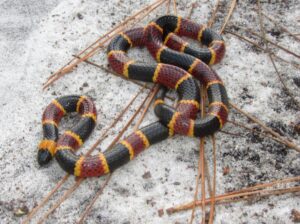
If you have been bitten by a snake, you SHOULD:
▪ Sit down and stay calm.
▪ Gently wash the bite area with warm, soapy water.
▪ Remove any jewelry or tight clothing near the bite site.
▪ Keep the bitten area still, if possible, and raise it to heart level.
▪ Call the Carolinas Poison Center: 1-800-222-1222.
Note: If a snakebite victim is having chest pain, difficulty breathing, face swelling or has lost consciousness, call 911 immediately.
If bitten by a snake, you SHOULD NOT:
▪ Cut the bitten area to try to drain the venom. This can worsen the injury.
▪ Ice the area. Icing causes additional tissue damage.
▪ Apply a tourniquet or any tight bandage. It’s actually better for the venom to flow through the body than for it to stay in one area.
▪ Suck on the bite or use a suction device to try to remove the venom.
▪ Attempt to catch or kill the snake.
Call Carolinas Poison Center at 1-800-222-1222 for questions about a snake bite or for more information.
(Source: Carolinas Poison Center)
Read more » click here
Hot Button Issues –
Subjects that are important to people and about which they have strong opinions

Climate
For more information » click here
There’s something happening here
What it is ain’t exactly clear
Heat Will Likely Soar to Record Levels in Next 5 Years, New Analysis Says
The News
Global temperatures are likely to soar to record highs over the next five years, driven by human-caused warming and a climate pattern known as El Niño, forecasters at the World Meteorological Organization said on Wednesday. The record for Earth’s hottest year was set in 2016. There is a 98 percent chance that at least one of the next five years will exceed that, the forecasters said, while the average from 2023 to ’27 will almost certainly be the warmest for a five-year period ever recorded. “This will have far-reaching repercussions for health, food security, water management and the environment,” said Petteri Taalas, the secretary general of the meteorological organization. “We need to be prepared.”
Why It Matters: Every fraction of a degree brings new risks.
Even small increases in warming can exacerbate the dangers from heat waves, wildfires, drought and other calamities, scientists say. Elevated global temperatures in 2021 helped fuel a heat wave in the Pacific Northwest that shattered local records and killed hundreds of people. El Niño conditions can cause further turmoil by shifting global precipitation patterns. The meteorological organization said it expected increased summer rainfall over the next five years in places like Northern Europe and the Sahel in sub-Saharan Africa and reduced rainfall in the Amazon and parts of Australia. The organization reported that there is also a two thirds chance that one of the next five years could be 1.5 degrees Celsius, or 2.7 degrees Fahrenheit, hotter than the 19th-century average. That does not mean that the world will have officially breached the aspirational goal in the Paris climate agreement of holding global warming to 1.5 degrees Celsius. When scientists talk about that temperature goal, they generally mean a longer-term average over, say, two decades in order to root out the influence of natural variability. Many world leaders have insisted on the 1.5-degree limit to keep the risks of climate change to tolerable levels. But nations have delayed so long in making the monumental changes necessary to achieve this goal, such as drastically cutting fossil-fuel emissions, that scientists now think the world will probably exceed that threshold around the early 2030s.
Background: La Niña, a cooling influence, is on the way out.
Global average temperatures have already increased roughly 1.1 degrees Celsius since the 19th century, largely because humans keep burning fossil fuels and pumping heat-trapping gases like carbon dioxide into the atmosphere. But while that overall upward trend is clear, global temperatures can bounce up and down a bit from year to year because of natural variability. For instance, a cyclical phenomenon in the Pacific Ocean, the El Niño-Southern Oscillation, causes year-to-year fluctuations by shifting heat in and out of deeper ocean layers. Global surface temperatures tend to be somewhat cooler during La Niña years and somewhat hotter during El Niño years. The last record hot year, 2016, was an El Niño year. By contrast, La Niña conditions have dominated for much of the past three years: while they’ve been unusually warm, they were still slightly below 2016 levels. Now, scientists are expecting El Niño conditions to return later this summer. When combined with steadily rising levels of greenhouse gases in the atmosphere, that will most likely cause temperatures to accelerate to new highs.
Read more » click here
Global temperatures could soon briefly breach climate threshold, scientists warn
The World Meteorological Organization virtually guarantees that one of the next five years will be the warmest on record, announcing Wednesday that a developing El Niño pattern will overlap with worsening human-caused climate change to push Earth’s temperatures into uncharted territory. While Earth’s temperatures have fluctuated wildly over its 4.5 billion year history, it’s well established that human emissions are accelerating warming at a breakneck pace, the rapidity of which is distinct from natural processes. Experts at the World Meteorological Organization (WMO) anticipate that global temperatures at some point in the next five years will, at least temporarily, spike above the 1.5 degree Celsius (2.7 degree Fahrenheit) benchmark outlined in the Paris Climate Accords, an agreement signed by 196 countries at the United Nations Climate Change Conference on Dec. 12, 2015. That 1.5 degree Celsius number is compared to preindustrial levels. “WMO is sounding the alarm that we will breach the 1.5 [degree Celsius] level on a temporary basis with increasing frequency,” said WMO secretary general Prof. Peter Taalas in a news release. Although the WMO suggests the global temperature could temporarily reach that level, separate analyses have previously suggested a more permanent arrival above the 1.5 degree Celsius threshold is more likely to arrive in the 2030s. The WMO suggests there’s a 1 in 3 chance that it will occur in the next five years.
What the WMO is predicting
The World Meteorological Organization is warning of the following:
- A 66 percent chance, or roughly 2 out of 3 odds, that Earth’s global temperature exceeds the 1.5 degree Celsius (2.7 degree Fahrenheit) above preindustrial levels benchmark at least once in the next five years.
- A 98 percent likelihood, or essentially a guarantee, that at least one of the next five years will go down as Earth’s warmest on record. Records date back to around 1850.
- There is also a 98 percent chance that the upcoming five-year block, 2023 to 2027, could average as the hottest five-year window on record. (The past eight years were the eight warmest on record.)
- Heating of the Arctic is predicted to triple average warming globally. Some peer-reviewed research indicates that a disproportionate warming of the poles can increase the amplitude, or waviness, of the jet stream, leading to more extreme weather patterns. There is also research to suggest reduced periodicity of the jet stream, or a slowing of its west-to-east propagation. That allows weather patterns to become “stuck” for longer.
Climate change and El Niño overlap
The past three years have featured a “triple dip” La Niña, or a global weather pattern born from a cooling of the waters in the eastern tropical Pacific. That fostered sinking motion in the air over the Pacific, in turn allowing rising motion and enhanced hurricane seasons in the Atlantic. Now meteorologists are anticipating a flip-flop, with an abrupt warm-up of waters in the eastern Pacific. The Climate Prediction Center at the National Weather Service predicts an 80 percent chance of a moderate El Niño developing in the coming months, with a 55 percent likelihood it will be “strong.” There’s also a 90 percent shot it sticks around into the Northern Hemisphere’s winter months. Earth’s temperature is known to warm during an El Niño. That’s why scientists are concerned about it exacerbating the effects of climate change, which continue to grow. For six of the past seven decades, the warmest year of each of said decades was an El Niño year. That’s why it’s highly probable that at least one of the next several years, which will inevitably feature an El Niño, will be catapulted above the 1.5 degrees Celsius threshold.
Fitting into a larger pattern
Since 1850, or before the Industrial Revolution, global temperatures have warmed about 1.1 degree Celsius, or about 2 degrees Fahrenheit. That may seem inconsequential, but subtle changes in temperature can have cascading ripple effects on the fundamental behaviors of the atmosphere and the innumerable land, water, ice and ecological cycles that interact with it. For each degree Fahrenheit the air temperature warms, the air can hold 4 percent more water. (For each degree Celsius, it can hold 7 percent more water.) That means temperature rises are accompanied by an exponential increase in the atmosphere’s moisture-storing capacity. Where moisture is available, flooding rains are becoming increasingly common. Where and when it’s not, drought is becoming more severe and more deeply entrenched. The warming climate has also been tied to more extreme wildfire behavior and increased areal coverage of land burned, stronger and more rapidly intensifying tropical cyclones/hurricanes, cold-season tornado outbreaks and a litany of other hazards. While 2016, an El Niño year, still holds the record for the warmest year catalogued by WMO data sets, the past eight years are the eight warmest on record. While it’s impossible to say with certainty where 2023 will end up, the year is already off to an alarming start. The National Oceanic and Atmospheric Administration has said there’s a greater than 1 in 4 chance that 2023 becomes the new warmest year on record, and a 9 out of 10 chance of it being a top-five year. After setting a record in 2022, for example, global ocean temperatures are running 0.1 to 0.2 degrees Celsius higher than ever observed by satellites this time of year. That’s mirrored by record global ocean heat content — a known fuel for strong hurricanes. In just the past few weeks, air temperature records have abounded worldwide. That’s been especially true in Southeast Asia, one of the most densely populated places in the world. On May 6, Luang Prabang in Laos made it to 110.3 degrees, beating out its 108.9-degree all-time record set just last month. Vietnam also broke a national heat record, hitting 111.6 degrees in Tuong Duong. Bangkok got to 104.9 degrees, its all-time record, and Cambodia, as well as parts of China, set records for the month of May. Heat records have been smashed in the U.S. Pacific Northwest and historic wildfires are burning unusually early in British Columbia and Alberta, Canada, suffocating the city of Calgary in a toxic orange shroud. And on Wednesday, 35 weather stations in Japan logged their hottest May day on record. Each of the events is made more likely and intense by the effects of human influence.
Read more » click here
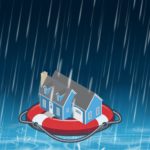
Flood Insurance Program
For more information » click here
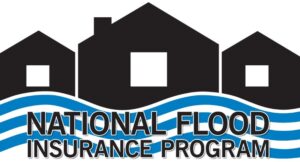
National Flood Insurance Program: Reauthorization
Congress must periodically renew the NFIP’s statutory authority to operate. On December 23, 2022, the President signed legislation passed by Congress that extends the National Flood Insurance Program’s (NFIP’s) authorization to September 30, 2023.
Congress must now reauthorize the NFIP
by no later than 11:59 pm on September 30, 2023.

GenX
For more information » click here

Homeowners Insurance
For more information » click here
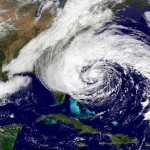
Hurricane Season
For more information » click here
Here’s why this hurricane season could be unusually unpredictable
El Niño typically means a quieter hurricane season. As ocean temperatures rise, that could be changing.
Under normal circumstances, a quiet Atlantic hurricane season would be a safe bet this year: The global climate pattern known as El Niño is fast developing, and it’s known to diminish tropical cyclone activity in the Atlantic basin. But unusually warm waters — in some areas setting records for this time of year — could cancel that out, creating conditions that could instead fuel an active season of revved-up storms. That means the outlook for tropical cyclone risks is significantly more complicated just ahead of this year’s season beginning June 1. National Oceanic and Atmospheric Administration scientists are expected to factor that uncertainty heavily into a hurricane season forecast that will be released Thursday. Seasonal forecasting is always difficult, but it’s even harder to predict which of the competing influences will win out in the months ahead. “There’s not a lot of historic precedence for this,” said Philip Klotzbach, lead hurricane researcher at Colorado State University. As the season plays out against the backdrop of global warming — which has driven a flurry of storms that intensify quickly into devastating hurricanes — meteorologists remind people that it only takes one extreme storm to turn even a quiet season catastrophic.
Unusual ocean warmth raises storm risks
Hurricane season is set to begin with an already established trend of ocean warming that has been building since early March. By the heart of hurricane season in late summer and early fall, waters around the Caribbean, Gulf of Mexico and Southeast U.S. coast are always bathwater-like. That warmth could be especially pronounced this year. “Those warm anomalies should, if anything, get stronger,” Klotzbach said. That is bad news for hurricane risks. Warm water is a necessary ingredient for tropical cyclones, and the warmer the water, the greater the potential for extremely strong hurricanes. The warmth translates to increased moisture in the air and greater available energy for a storm to unleash. And the recent ocean warming is grabbing climate scientists’ attention because of both its timing and its widespread appearance. It’s normal for ocean temperatures to rise along the surface of parts of the central and eastern Pacific when El Niño develops — something scientists have been observing off the western coast of South America in recent months. Those changes in sea surface temperatures and in winds across the Pacific have domino effects around the world and can trigger weather extremes. But the ocean warming observed as of late has developed in areas besides those Pacific hot spots — including parts of the Atlantic key for hurricane development. The deep tropics between the Caribbean and West Africa are significantly warmer than normal, something that could encourage any atmospheric disturbances moving into the Atlantic from Africa to organize and strengthen into tropical cyclones, said Brian McNoldy, senior research associate at the University of Miami and hurricane expert for Capital Weather Gang. “When waves come off of Africa, if they get that kick right away, that might help them form a little quicker,” McNoldy said. And though El Niño is known for accelerating planetary warming, the ocean trends are appearing well ahead of the climate pattern shift. Climate scientists don’t expect El Niño to arrive in earnest until some time in the coming weeks or months.
El Niño’s influence adds uncertainty
The ocean warmth notwithstanding, El Niño typically brings meteorologists a modicum of confidence in a quieter-than-average Atlantic hurricane season. It’s part of the cascade of impacts El Niño can have on weather patterns around the world. El Niño is associated with towering clouds and a rising motion in the lower atmosphere over the central and eastern Pacific, something that changes atmospheric circulation patterns in a way that tends to send dry, sinking air over the central Atlantic. That means diminished activity in the tropical zones is key for cyclone formation and development. The circulation patterns associated with El Niño also tend to bring an increase in wind shear, or a contrast in wind speeds and direction at different altitudes, over the Atlantic. High wind shear makes it difficult for storm systems to organize into classic cyclones with defined eyes surrounded by intense winds. Those factors have prompted some early hurricane season forecasts to call for below-normal storm activity. An average Atlantic hurricane season has about 14 named storms, half of which strengthen into hurricanes, according to data from 1991 through 2020. About three hurricanes a year become “major” storms, with maximum sustained winds of at least 111 mph. Klotzbach’s team at Colorado State’s Tropical Meteorology Project in April cited a budding El Niño in predicting that this season’s tallies would come short of those averages, with 13 named storms, 6 hurricanes and two major hurricanes. But the forecast also noted the outlook contained “more uncertainty than normal.” The team will offer an updated forecast June 1. Some forecasters are eyeing chances for increased tropical activity given the unusually warm Atlantic waters. The Weather Company, which owns weather.com and Weather Underground, and weather data company Atmospheric G2 predicted a near-normal season, with average hurricane activity and 15 named storms. They said in a hurricane season forecast released last month that the ocean temperature trend “gives one pause when relying on the potential El Niño event to keep the season quiet.”
Risks of a damaging season persist
That hesitation is especially true given caution from scientists over whether El Niño predictions will pan out. It is notoriously difficult to predict its development and trajectory when evaluating climate conditions during the Northern Hemisphere springtime. Even if El Niño forms as expected, weather forecasting models suggest wind shear may remain relatively limited even through the heart of hurricane season, Klotzbach said. And an active and damaging season could still develop if El Niño arrives later than expected, or in a weaker form, he added. Besides, meteorologists urge coastal residents to remain storm-ready even in quieter-than-average hurricane seasons. They stress that conditions can allow for devastating storms to make landfall despite larger climatic trends. That warning could be especially apt given the atmospheric battles meteorologists predict in the tropics between El Niño-fueled wind shear and a surge of ocean warmth. “There’s just no way of knowing which of those is going to be more important in any given week,” McNoldy said.
Read more » click here
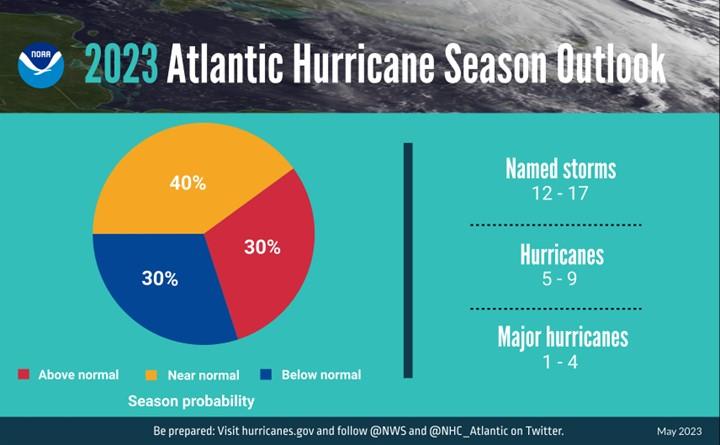 NOAA predicts a near-normal 2023 Atlantic hurricane season
NOAA predicts a near-normal 2023 Atlantic hurricane season
El Nino, above-average Atlantic Ocean temperatures set the stage
NOAA forecasters with the Climate Prediction Center, a division of the National Weather Service, predict near-normal hurricane activity in the Atlantic this year. NOAA’s outlook for the 2023 Atlantic hurricane season, which goes from June 1 to November 30, predicts a 40% chance of a near-normal season, a 30% chance of an above-normal season and a 30% chance of a below-normal season. NOAA is forecasting a range of 12 to 17 total named storms (winds of 39 mph or higher). Of those, 5 to 9 could become hurricanes (winds of 74 mph or higher), including 1 to 4 major hurricanes (category 3, 4 or 5; with winds of 111 mph or higher). NOAA has a 70% confidence in these ranges. The upcoming Atlantic hurricane season is expected to be less active than recent years, due to competing factors — some that suppress storm development and some that fuel it — driving this year’s overall forecast for a near-normal season. After three hurricane seasons with La Nina present, NOAA scientists predict a high potential for El Nino to develop this summer, which can suppress Atlantic hurricane activity. El Nino’s potential influence on storm development could be offset by favorable conditions local to the tropical Atlantic Basin. Those conditions include the potential for an above-normal west African monsoon, which produces African easterly waves and seeds some of the stronger and longer-lived Atlantic storms, and warmer-than-normal sea surface temperatures in the tropical Atlantic Ocean and Caribbean Sea which creates more energy to fuel storm development. These factors are part of the longer term variability in Atlantic atmospheric and oceanic conditions that are conducive to hurricane development — known as the high-activity era for Atlantic hurricanes — which have been producing more active Atlantic hurricane seasons since 1995. “With a changing climate, the data and expertise NOAA provides to emergency managers and partners to support decision-making before, during and after a hurricane has never been more crucial,” said NOAA Administrator Rick Spinrad, Ph.D. “To that end, this year we are operationalizing a new hurricane forecast model and extending the tropical cyclone outlook graphic from five to seven days, which will provide emergency managers and communities with more time to prepare for storms.”
This summer, NOAA will implement a series of upgrades and improvements. NOAA will expand the capacity of its operational supercomputing system by 20%. This increase in computing capability will enable NOAA to improve and run more complex forecast models, including significant model upgrades this hurricane season:
- In late June, the Hurricane Analysis and Forecast System (HAFS) will become operational. HAFS will run this season in tandem with the currently operational Hurricane Weather Research and Forecast Model System and Hurricanes in a Multi-scale Ocean-coupled Non-hydrostatic model, but eventually will become NOAA’s primary hurricane model. Retrospective analysis of tropical storms and hurricanes from the 2020-2022 seasons show that this model has a 10-15% improvement in track forecasts over existing operational models. This new model was jointly created by NOAA’s Atlantic Oceanographic & Meteorological Laboratory Hurricane Modeling and Prediction Program and NOAA’s National Weather Service Environmental Modeling Center.
- The Probabilistic Storm Surge model upgrade on May 2, advances storm surge forecasting for the contiguous U.S. and new forecasts for surge, tide and waves for Puerto Rico and the U.S. Virgin Islands. Forecasters now have the ability to run the model for two storms simultaneously. This model provides forecasters with the likelihood, or probability, of various flooding scenarios including a near worst-case scenario to help communities prepare for all potential outcomes.
Additional upgrades or new tools for hurricane analysis and forecasting include:
- The National Hurricane Center’s Tropical Weather Outlook graphic, which shows tropical cyclone formation potential, has expanded the forecast range from five to seven days.
- Over the last 10 years, flooding from tropical storm rainfall was the single deadliest hazard. To give communities more time to prepare, the Weather Prediction Center is extending the Excessive Rainfall Outlook an additional two days, now providing forecasts up to five days in advance. The outlook shows general areas at risk for flash flooding due to excessive rainfall.
- The National Weather Service will unveil a new generation of forecast flood inundation mapping for portions of Texas and portions of the Mid-Atlantic and Northeast in September 2023. These forecast maps will extend to the rest of the U.S. by 2026. Forecast flood inundation maps will show the extent of flooding at the street level.
NOAA will continue improving new and current observing systems critical in understanding and forecasting hurricanes. Two projects underway this season include:
- New small aircraft drone systems, the deployment of additional Saildrones and underwater gliders, and WindBorne global sounding balloons. These new technologies will advance our knowledge of hurricanes, fill critical data gaps and improve hurricane forecast accuracy.
- The modernization and upgrade of the Tropical Atmosphere Ocean buoy array. The upgrade will provide additional capabilities, updated instruments, more strategic placement of buoys and higher-frequency observations. Data from these buoys are used to forecast El Nino and La Nina, which can influence hurricane activity.
“As we saw with Hurricane Ian, it only takes one hurricane to cause widespread devastation and upend lives. So regardless of the number of storms predicted this season, it is critical that everyone understand their risk and heed the warnings of state and local officials. Whether you live on the coast or further inland, hurricanes can cause serious impacts to everybody in their path,” said FEMA Administrator Deanne Criswell. “Visit ready.gov or listo.gov for readiness resources and get real time emergency alerts by downloading the FEMA App. Actions taken today can save your life when disaster strikes. The time to prepare is now.”
NOAA’s outlook is for overall seasonal activity and is not a landfall forecast. In addition to the Atlantic seasonal outlook, NOAA also issues seasonal hurricane outlooks for the eastern Pacific and central Pacific hurricane basins. NOAA’s Climate Prediction Center will update the 2023 Atlantic seasonal outlook in early August, just prior to the historical peak of the season.
Read more » click here
A guide for hurricane season in the Wilmington area: Supplies, shelters, evacuations and more It’s never too early to prepare for hurricane season. And as the Atlantic hurricane season begins on June 1, here are things to know to stay safe in the Wilmington area. Evacuations Twenty coastal counties in North Carolina have established predetermined evacuation zones to simplify the coastal evacuation process in the event of an emergency. Everyone living or vacationing in North Carolina’s coastal areas should know your zone.
Evacuations:
Preparing for a hurricane — What you need to know about evacuations
Hurricane kit
Everyone usually remembers food and water, but what about medicine, insurance policies (home and auto), and other important documents? Here is a list of supplies and documents you should have ready in your “go bag” or supply kit, according to FEMA and the American Red Cross.
Supplies:
Are you prepared for a hurricane? Here’s a list of supplies to have in your hurricane kit.
Pet friendly shelters
If you need to evacuate and want to take your pets with you, several emergency management services will open emergency shelters at local schools if a hurricane should hit.
Shelters:
Where to find pet friendly hurricane shelters in the Wilmington area
Hurricane watch or warning?
Living in coastal North Carolina, most people know when hurricane season begins. But it’s also important to know the difference between a hurricane watch and a hurricane warning.
Watch or warning:
What’s the difference between a hurricane watch and warning?
Here’s more on the difference.
Wilmington’s worst storms
Take a look back at hurricane activity for the worst storms to ever hit the Wilmington area. Names such as Hazel and Florence will forever be etched to the region. Also check out the list of names for the 2023 hurricane season.
Worst hurricanes:
What are the 5 worst hurricanes to ever hit the Wilmington area?
2023 names: Here’s the list of names for the 2023 Atlantic hurricane season.
Up-to-date weather
There are several webcams following weather on the coast. Here are a few of them.
You can also follow a storm from its beginnings to now with this storm tracker.
Weather webcams:
Check the latest weather conditions via these webcams along the NC coast
Track the storm:
See where the storm is in real time
Read more » click here
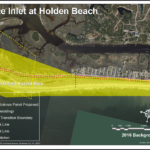
Inlet Hazard Areas
For more information » click here
.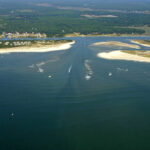
Lockwood Folly Inlet
For more information » click here.
 Dredge begins work to clear Lockwood Folly Inlet
Dredge begins work to clear Lockwood Folly Inlet
After months of frustration and little short-term hope offered by federal officials, the Miss Katie dredge has come to the rescue of Lockwood Folly Inlet. Authorized to a depth of 12 feet, the inlet has shoaled to a depth of two feet and the U.S. Coast Guard removed navigational buoys, stating they were misleading boaters into believing there was safe passage. U.S. Army Corps of Engineers officials recently told Brunswick County leaders they did not have the time or resources to deal with the problem immediately. The inlet, however, is vital to commercial fishermen and recreational boaters, especially as waters warm toward the summer and more people arrive, whether to fish or visit the coast. Holden Beach has a permit for dredging and officials put it into action last week, contracting with the Dare County special-purpose dredge Miss Katie, which could be onsite for as long as 30 days, depending on progress and the weather. Two-thirds of the cost will be paid by the state’s Shallow Draft Inlet fund. “This is great,” said Cane Faircloth, spokesman for the N.C. For-Hire Captains Association. “They are crushing it.” Operators expect to move roughly 100,000 cubic yards of sand. Miss Katie is uniquely capable of handling tough situations like the one at Lockwood Folly Inlet. Put into service last summer, it’s essentially a three-prong approach to inlet management aboard one ship: the dredge has a hopper that can pull and move sand close to shore, as well as dual arms that can suction sand; and the arms can also be charged with sea water from the hopper to create a jet-like stream to create a pilot path for the ship to move sand. Dare County officials agreed to commission the ship in 2019, following significant, unresolved issues at Oregon Inlet and other regional waterways. The General Assembly provided a $15-million grant/loan for construction of the vessel.
Read more » click here

Seismic Testing / Offshore Drilling
For more information » click here.

Offshore Wind Farms
For more information » click here
Things I Think I Think –
 Eating out is one of the great little joys of life.
Eating out is one of the great little joys of life.
Restaurant Review:
The Dinner Club visits a new restaurant once a month. Ratings reflect the reviewer’s reaction to food, ambience and service, with price taken into consideration.
///// May 2023
Name: Sorella
Cuisine: Italian Restaurant
Location: 3219 Holden Beach Road, Supply NC
Contact: 910.842.2177 / https://www.sorellapizzapasta.com/
Food: Average / Very Good / Excellent / Exceptional
Service: Efficient / Proficient / Professional / Expert
Ambience: Drab / Plain / Distinct / Elegant
Cost: Inexpensive <=$18 / Moderate <=$24 / Expensive <=$30 / Exorbitant <=$40
Rating: Two Stars
Sorella means sister in Italian, they are the sister restaurant of Maria’s Pizzeria in Ocean Isle Beach and Lucca in Shallotte. Located on the causeway to Holden Beach, they are open daily at 11:00 am. A local authentic Italian restaurant, a casual atmosphere, with a limited menu, serving a wide variety of pizzas, pastas, and some traditional Italian dishes. This is one of the better restaurant offerings in the area.
Editor’s note –
After our pandemic hiatus we discovered that the old price guidelines were obsolete
All of our previous restaurant reviews have been updated with current menu prices
Book Review:
Read several books from The New York Times best sellers fiction list monthly
Selection represents this month’s pick of the litter
/////
 LESSONS IN CHEMISTRY by Bonnie Garmus
LESSONS IN CHEMISTRY by Bonnie Garmus
It’s the story of Elizabeth Zott, a woman chemist and single mother confronting extreme misogyny in the 50s and ’60s. Elizabeth, our feminist heroine, is a formidable, unapologetic and an inspiring scientist. She is an uncompromising woman who refuses to settle, challenges every hierarchy, rule and system that she can. Her plea for rationalism and gender equality is an attempt to change the status quo. A sweet revenge comic novel that could be called a quirky tragicomedy.
That’s it for this newsletter
See you next month
Lou’s Views . HBPOIN
. • Gather and disseminate information
. • Identify the issues and determine how they affect you
. • Act as a watchdog
. • Grass roots monthly newsletter since 2008

